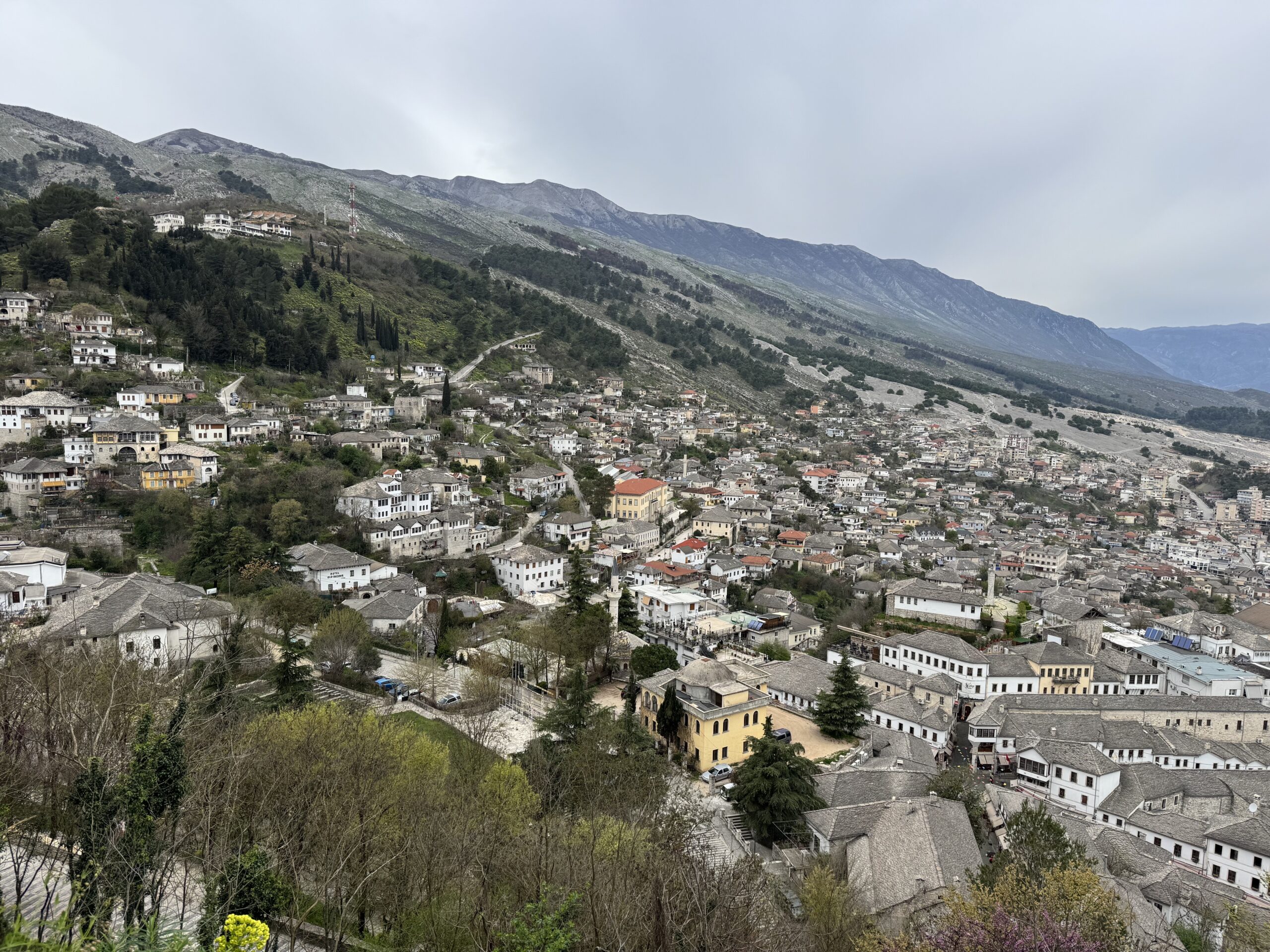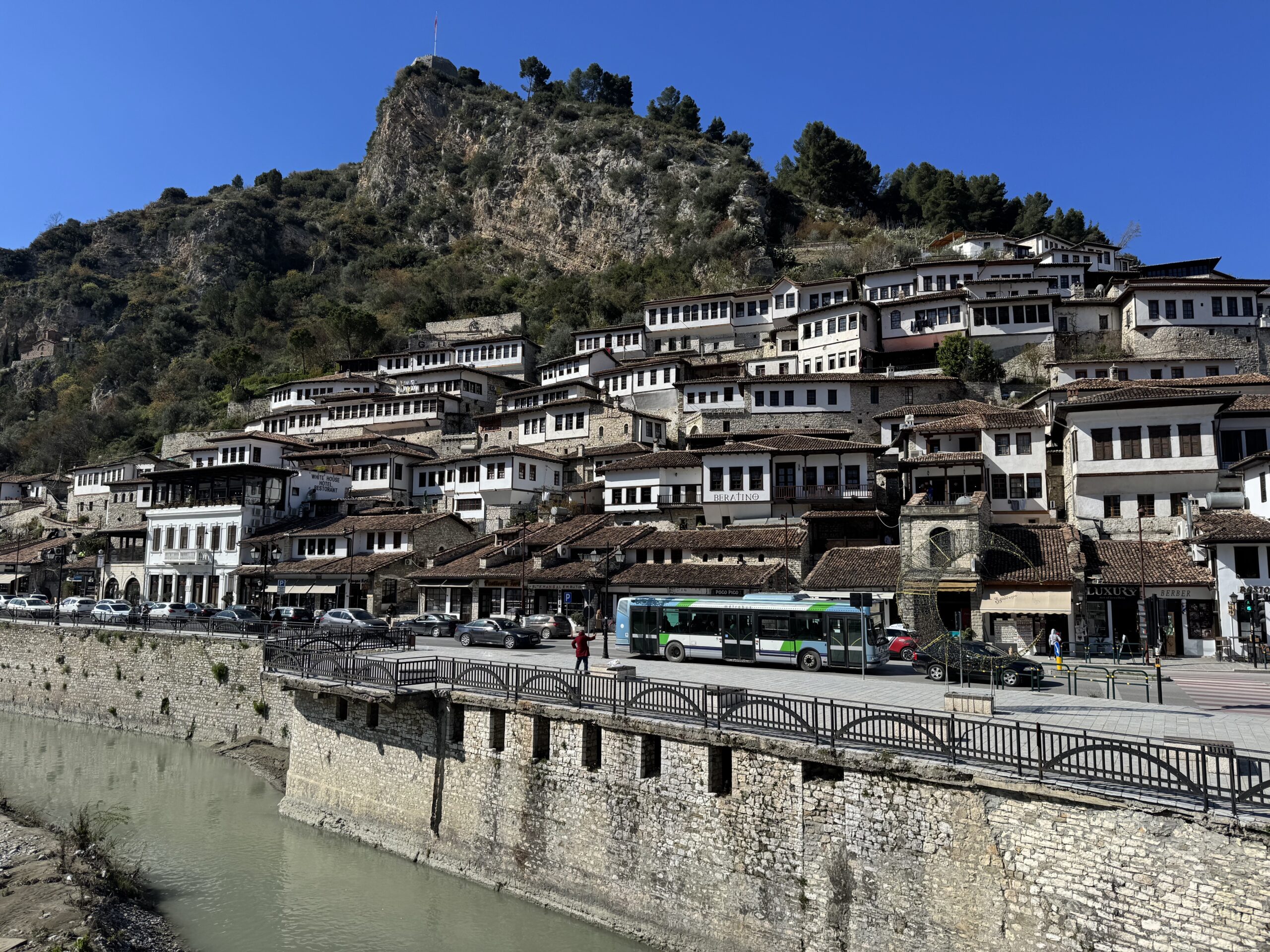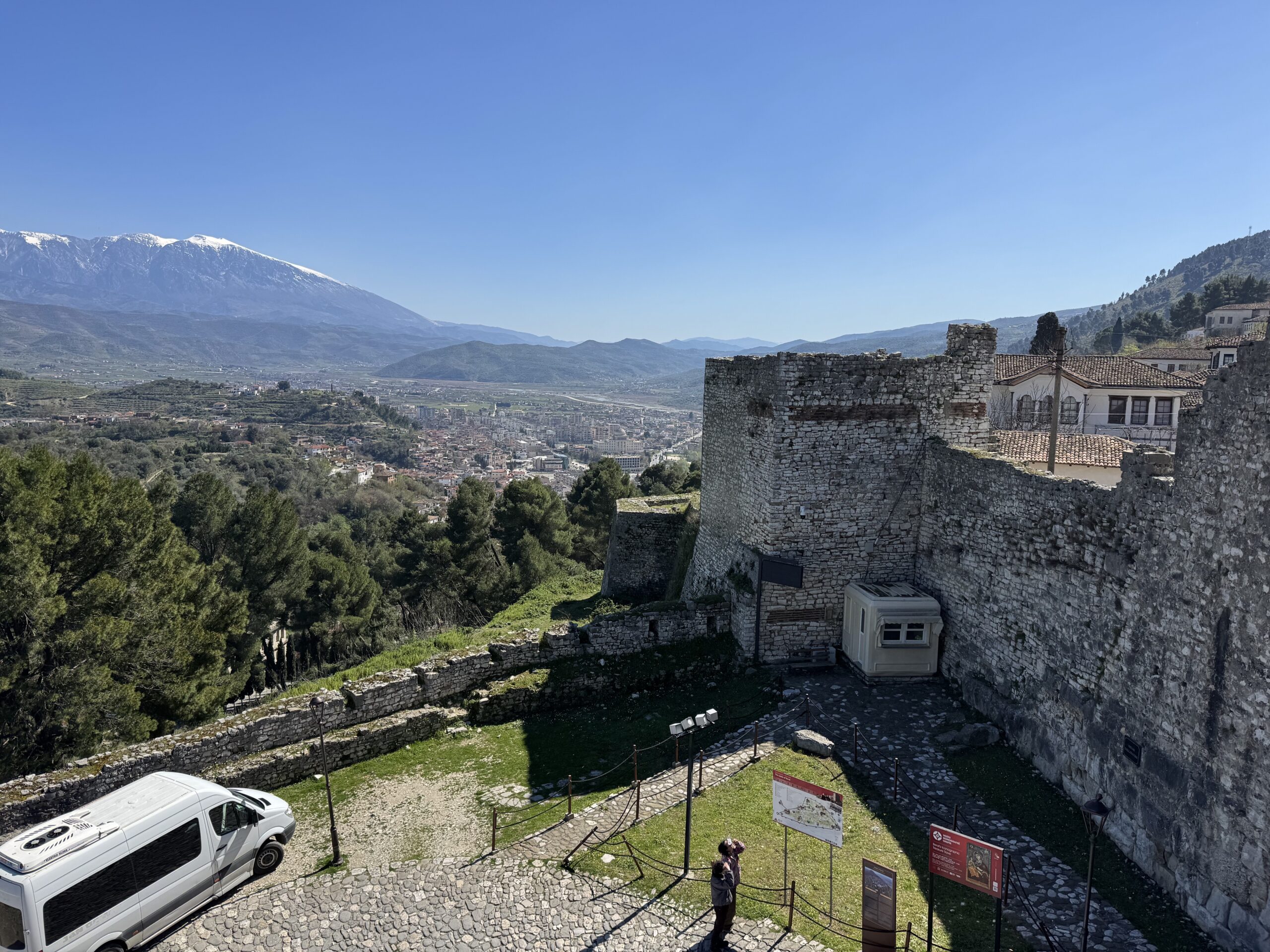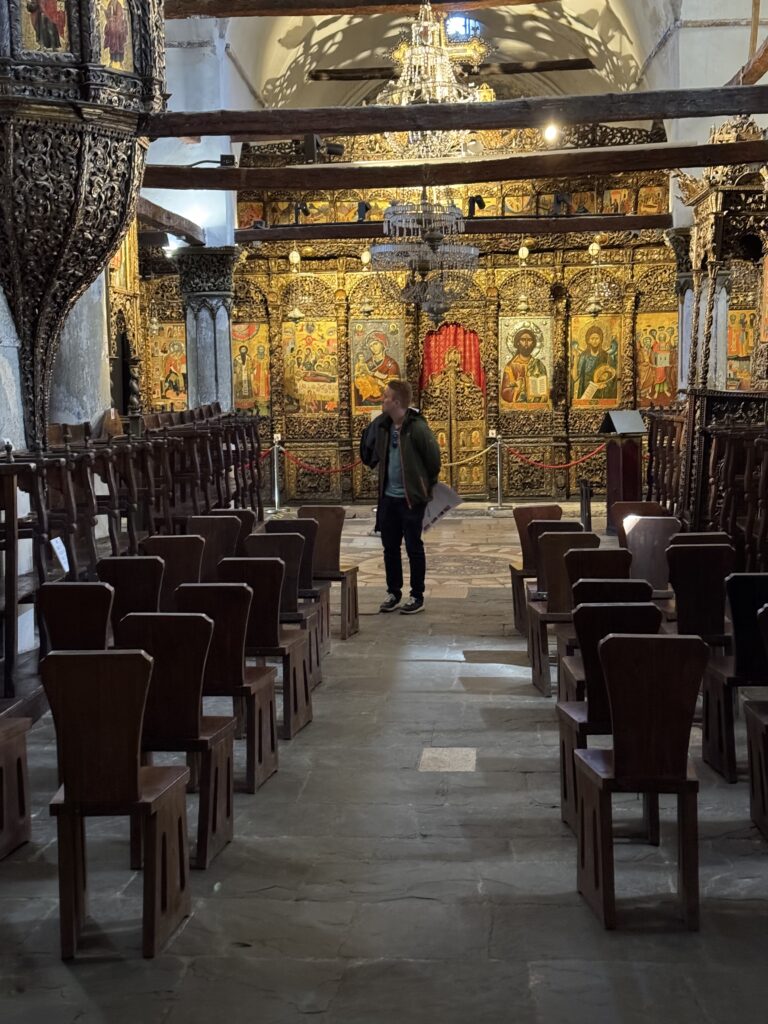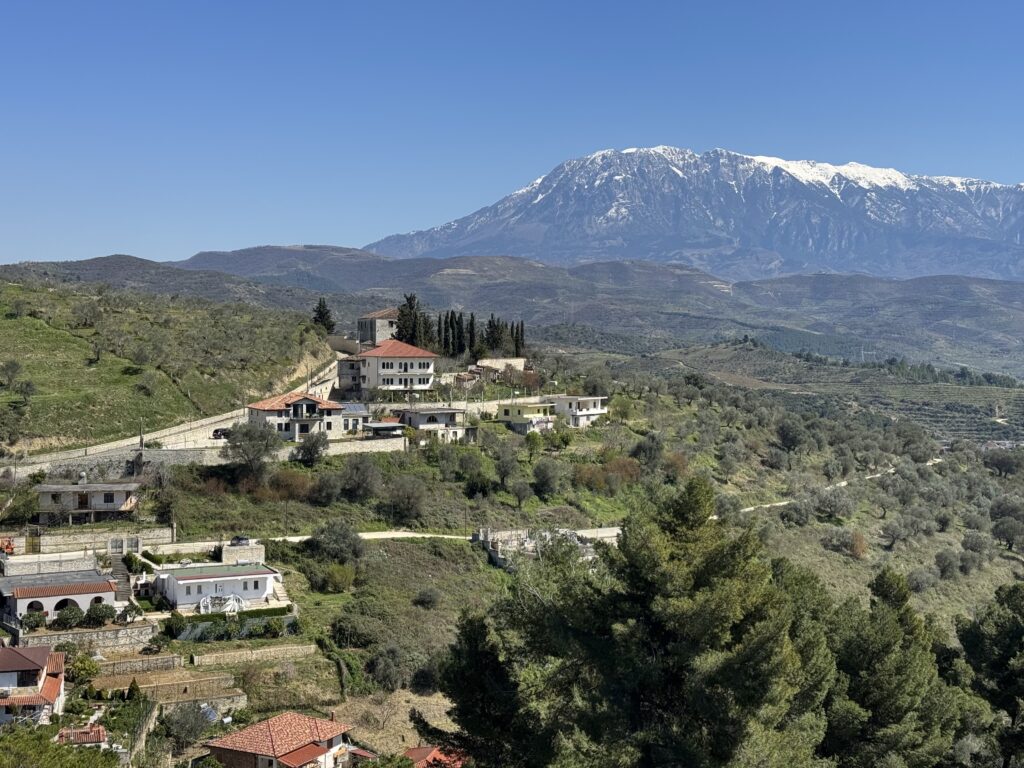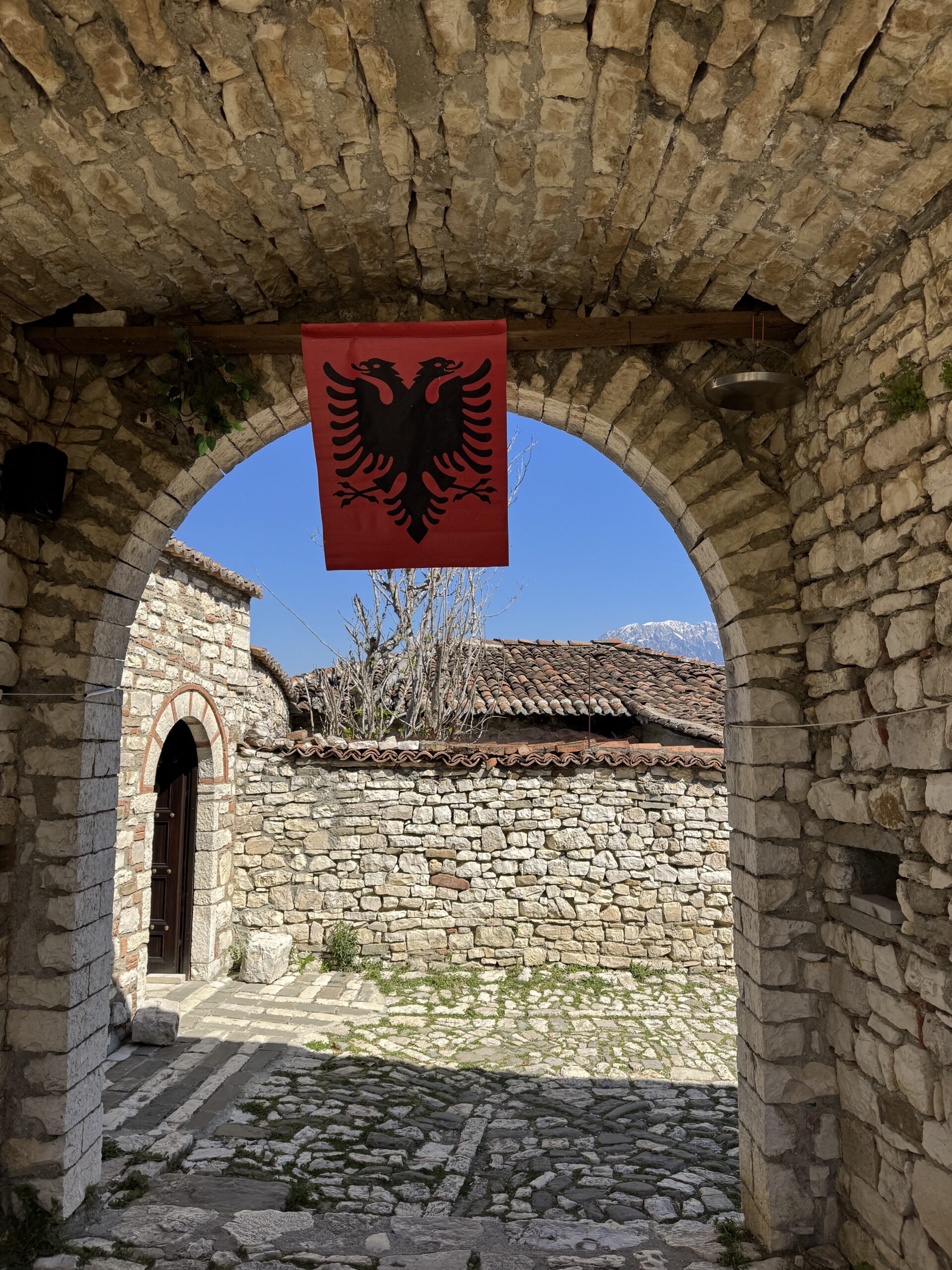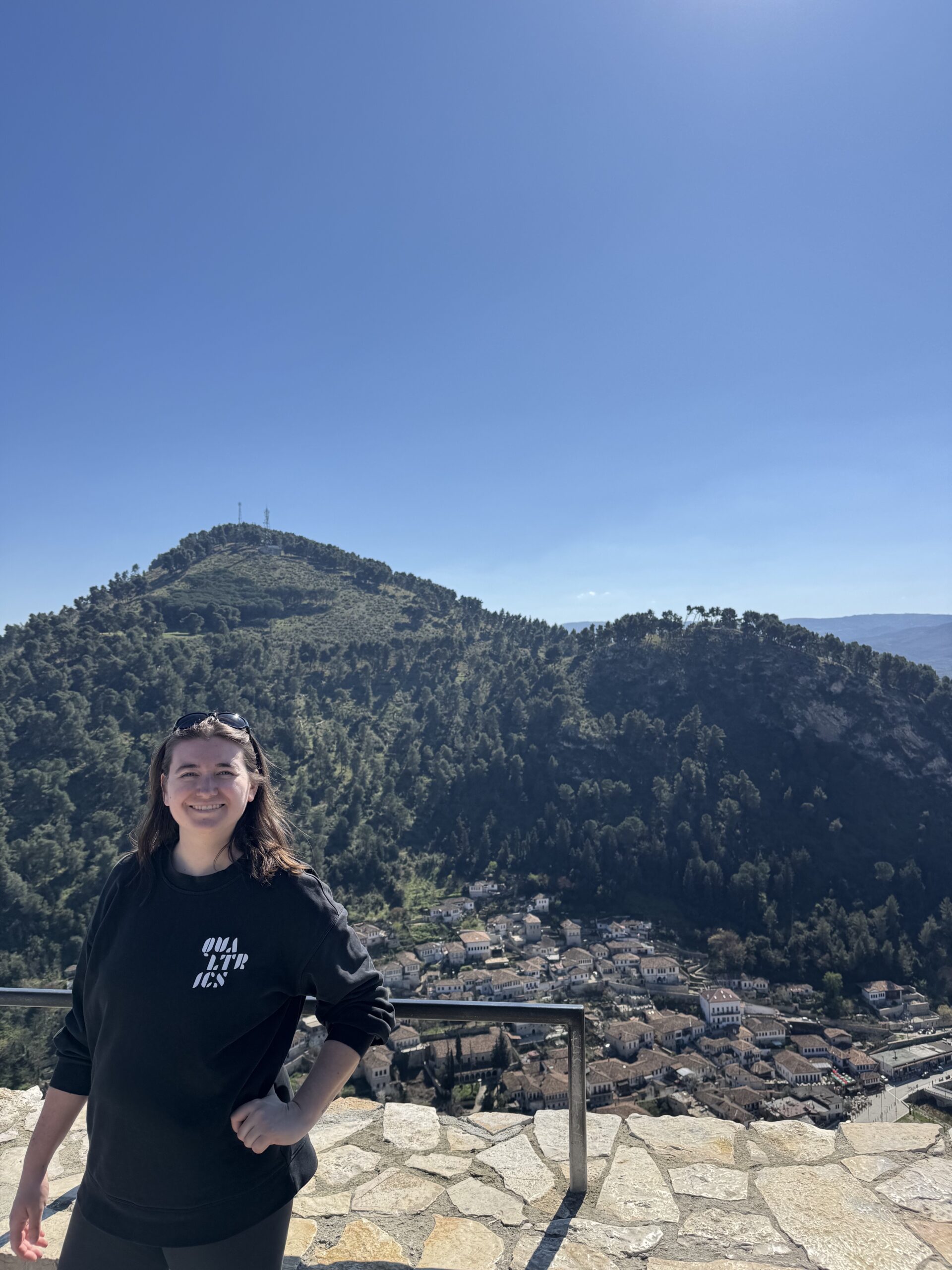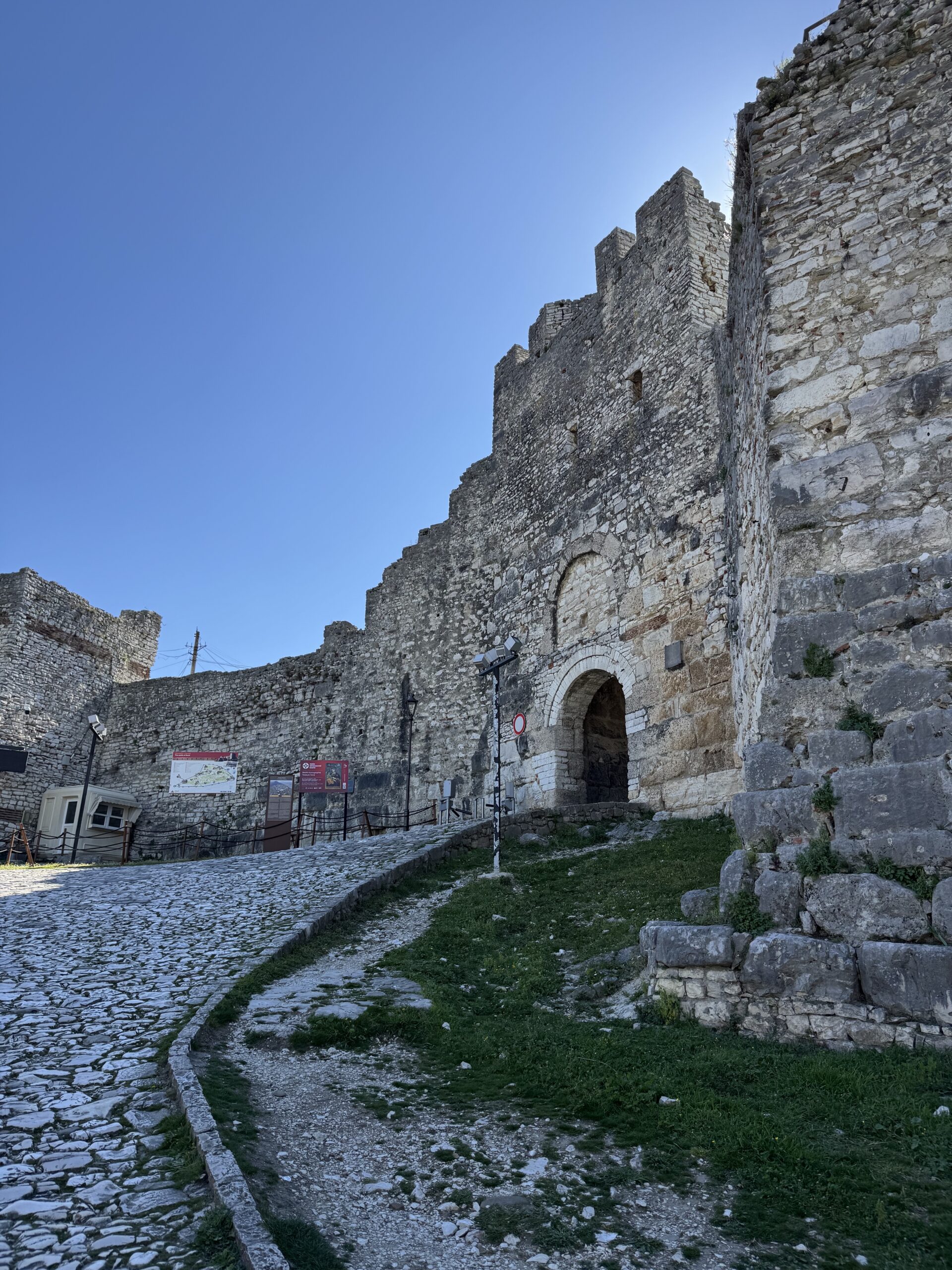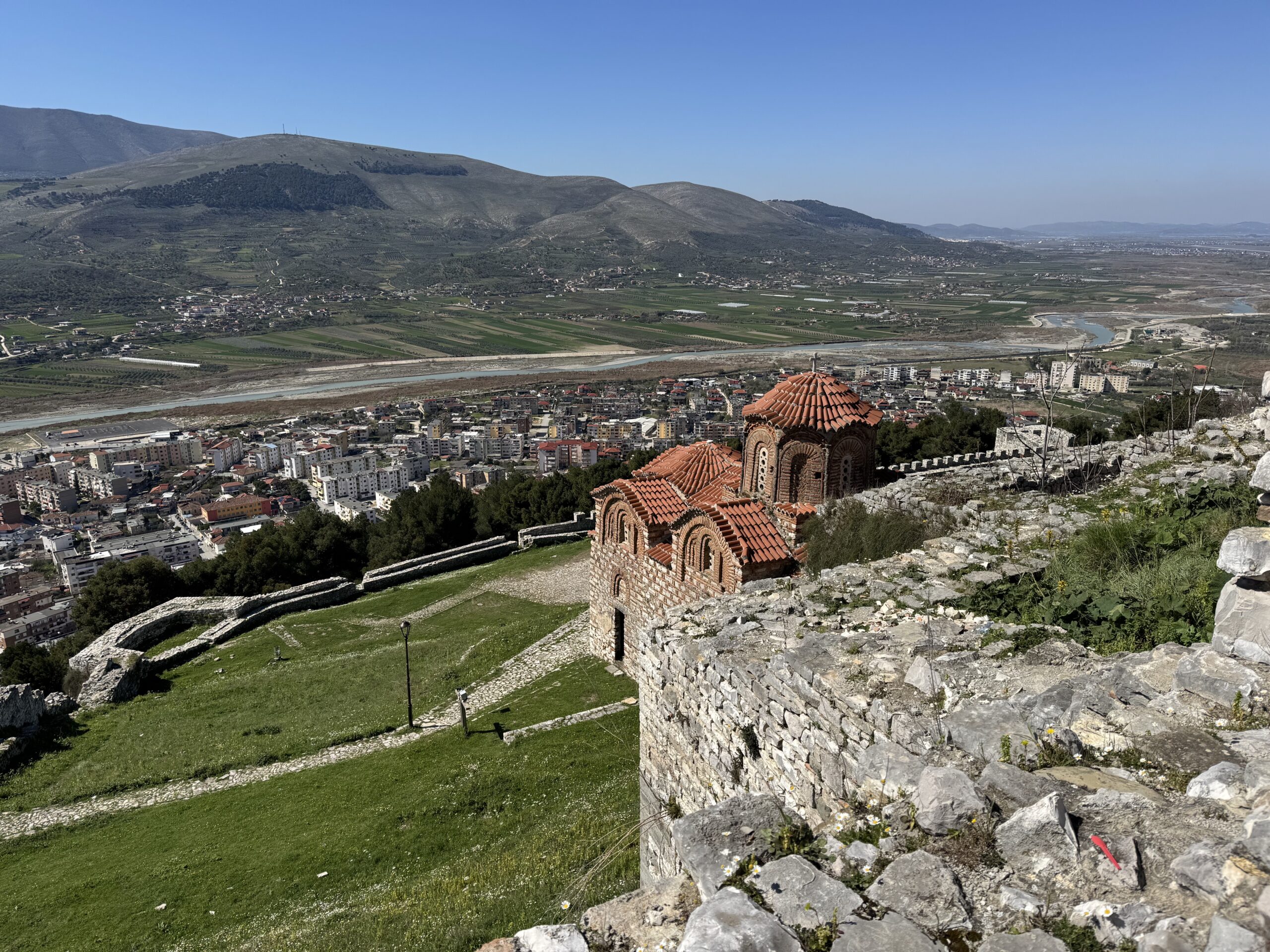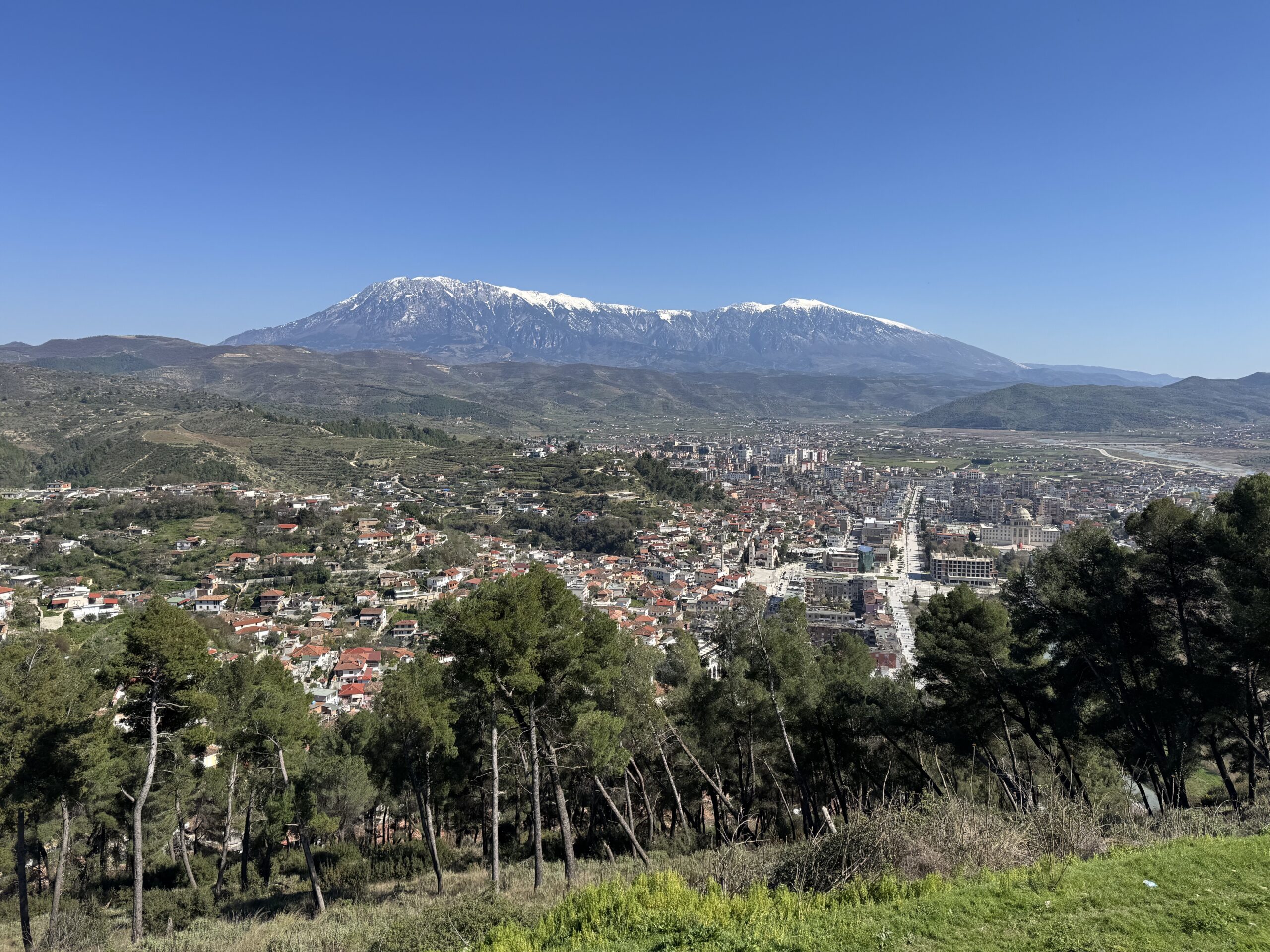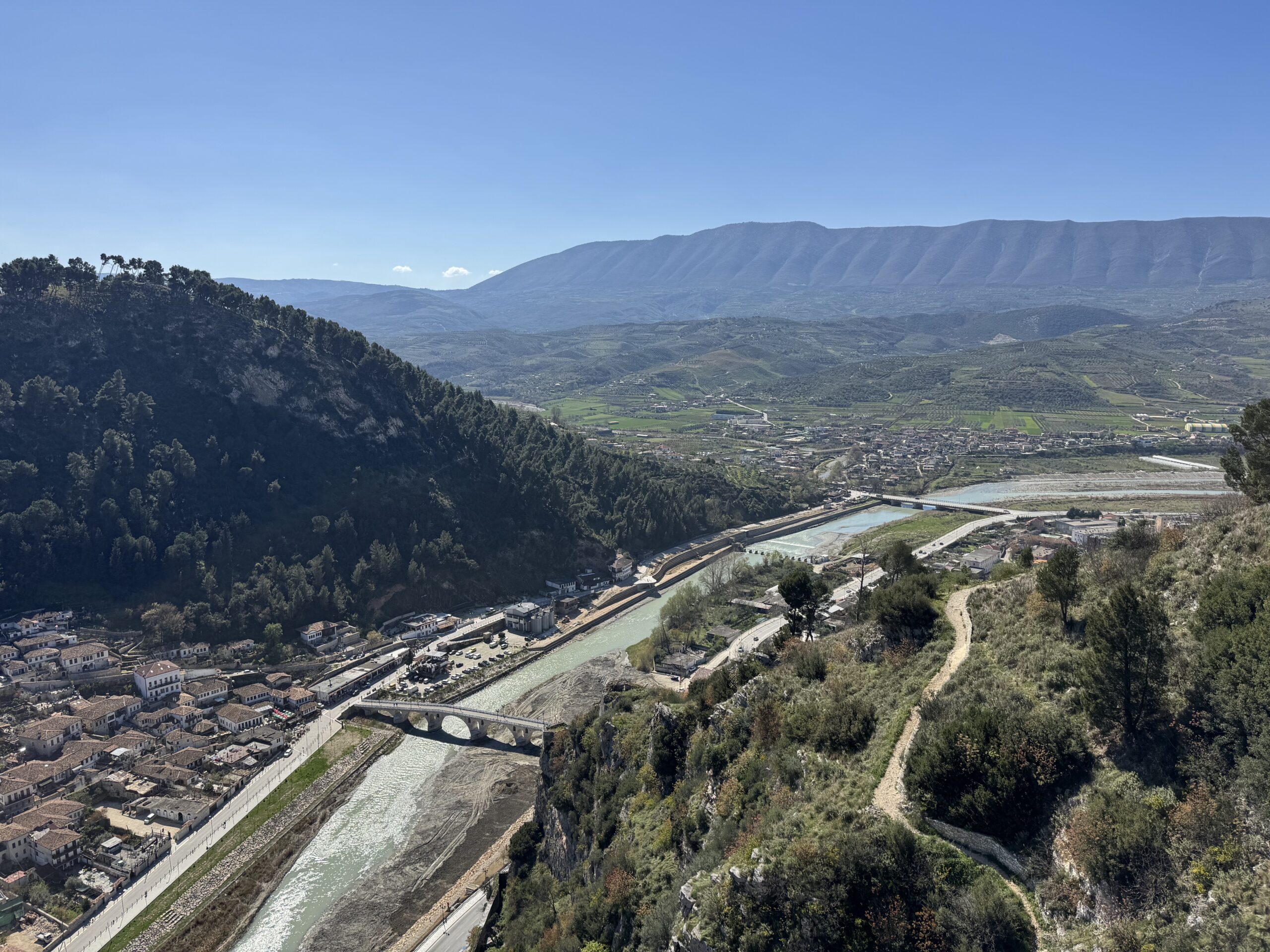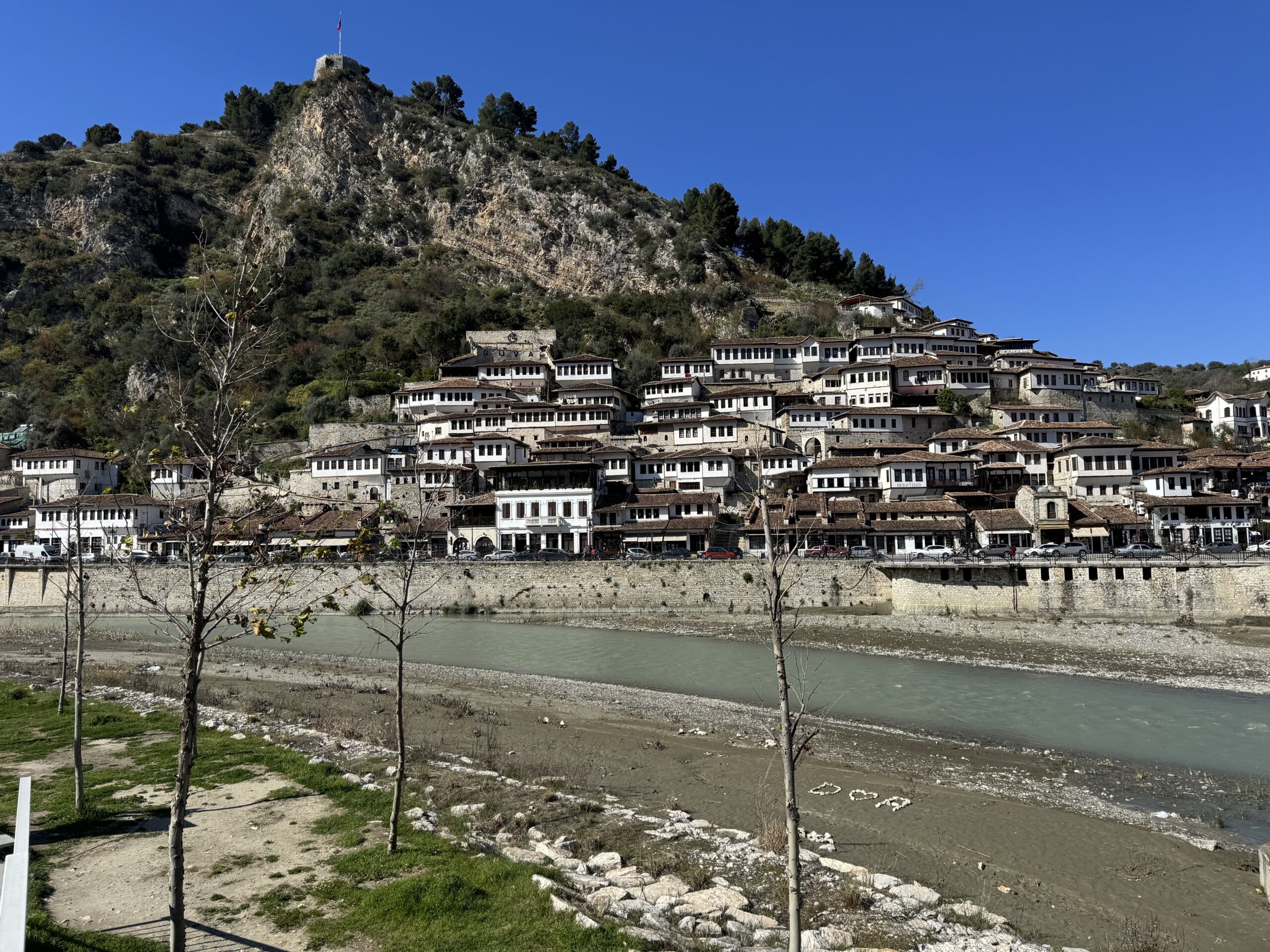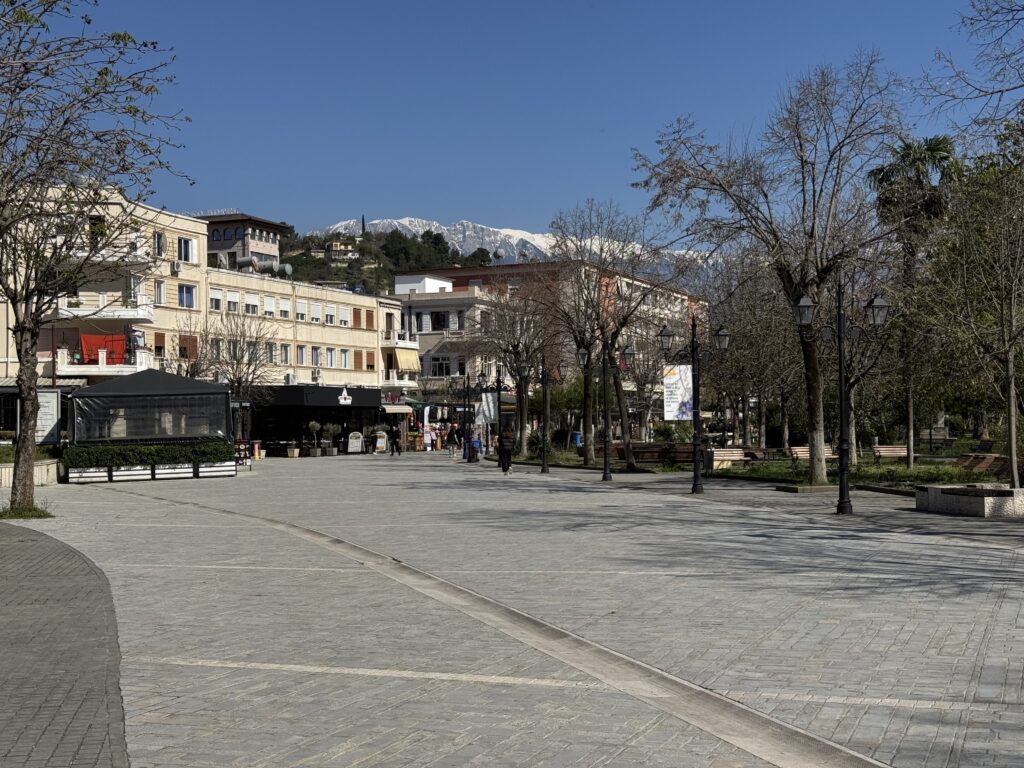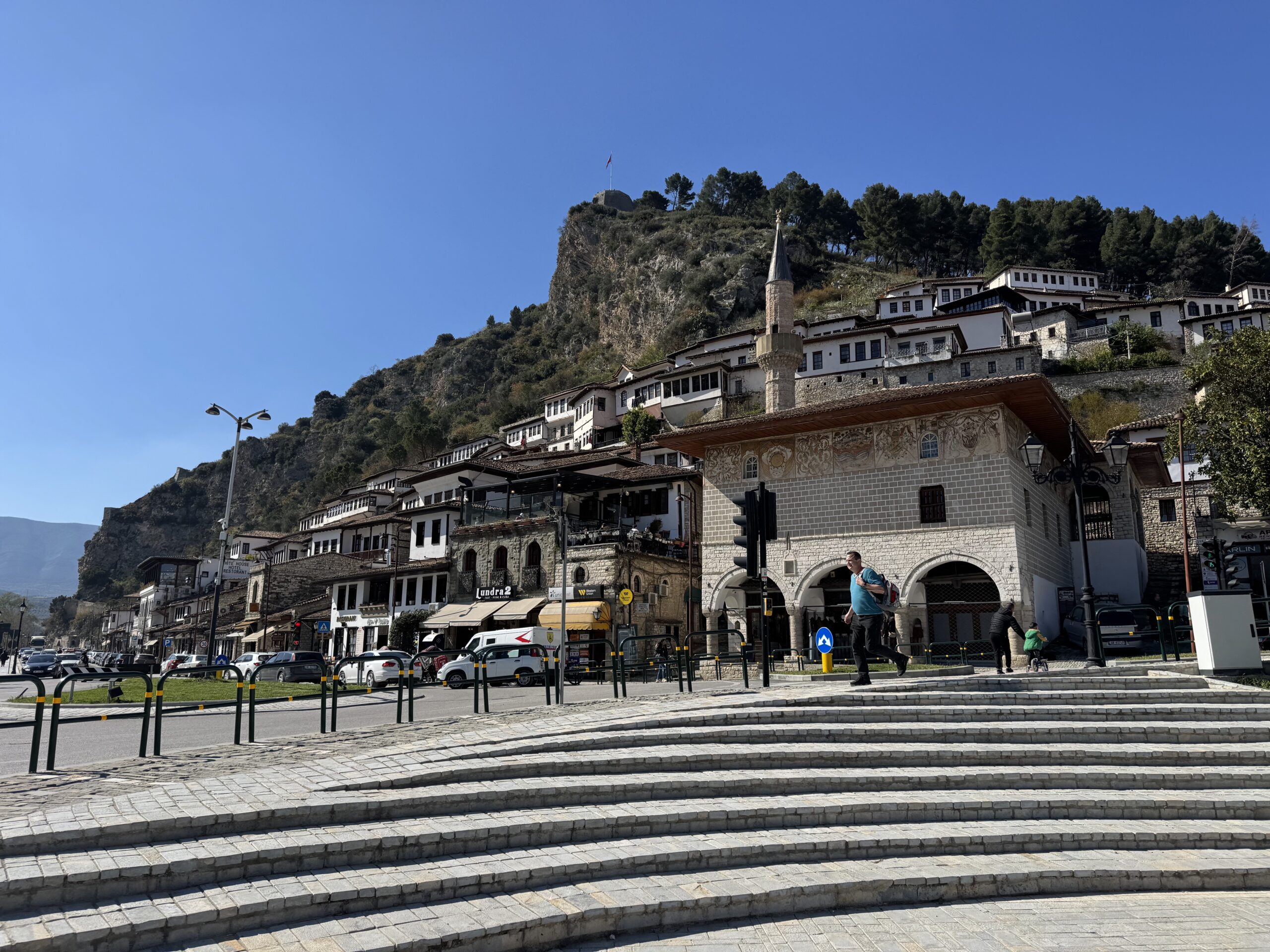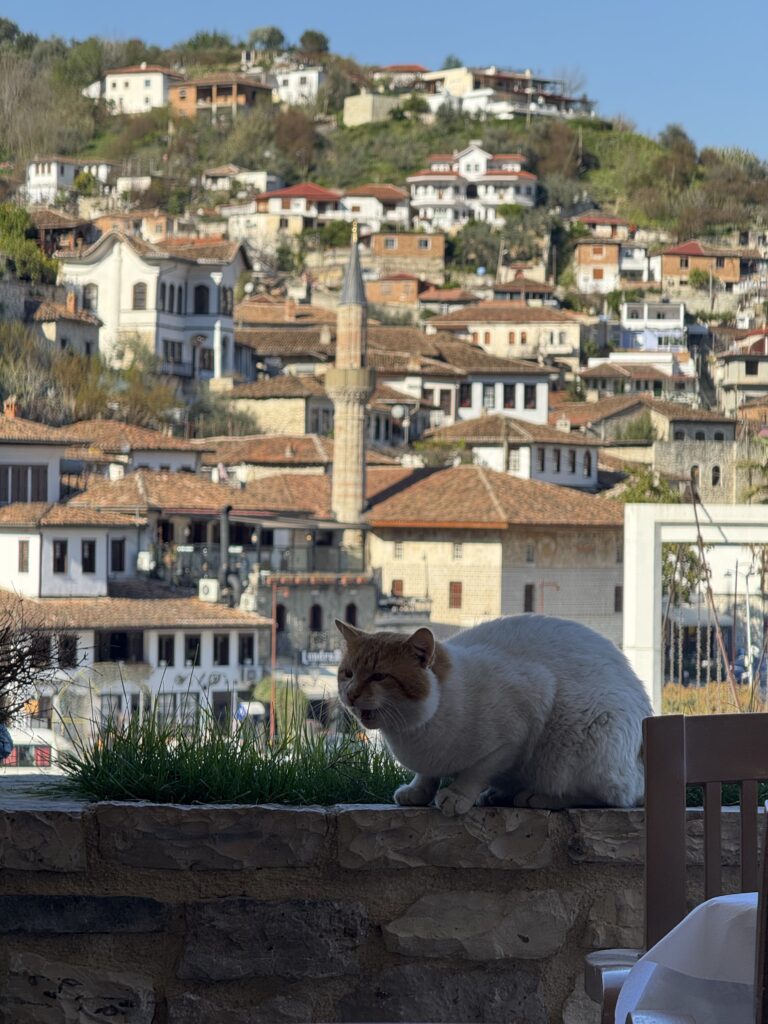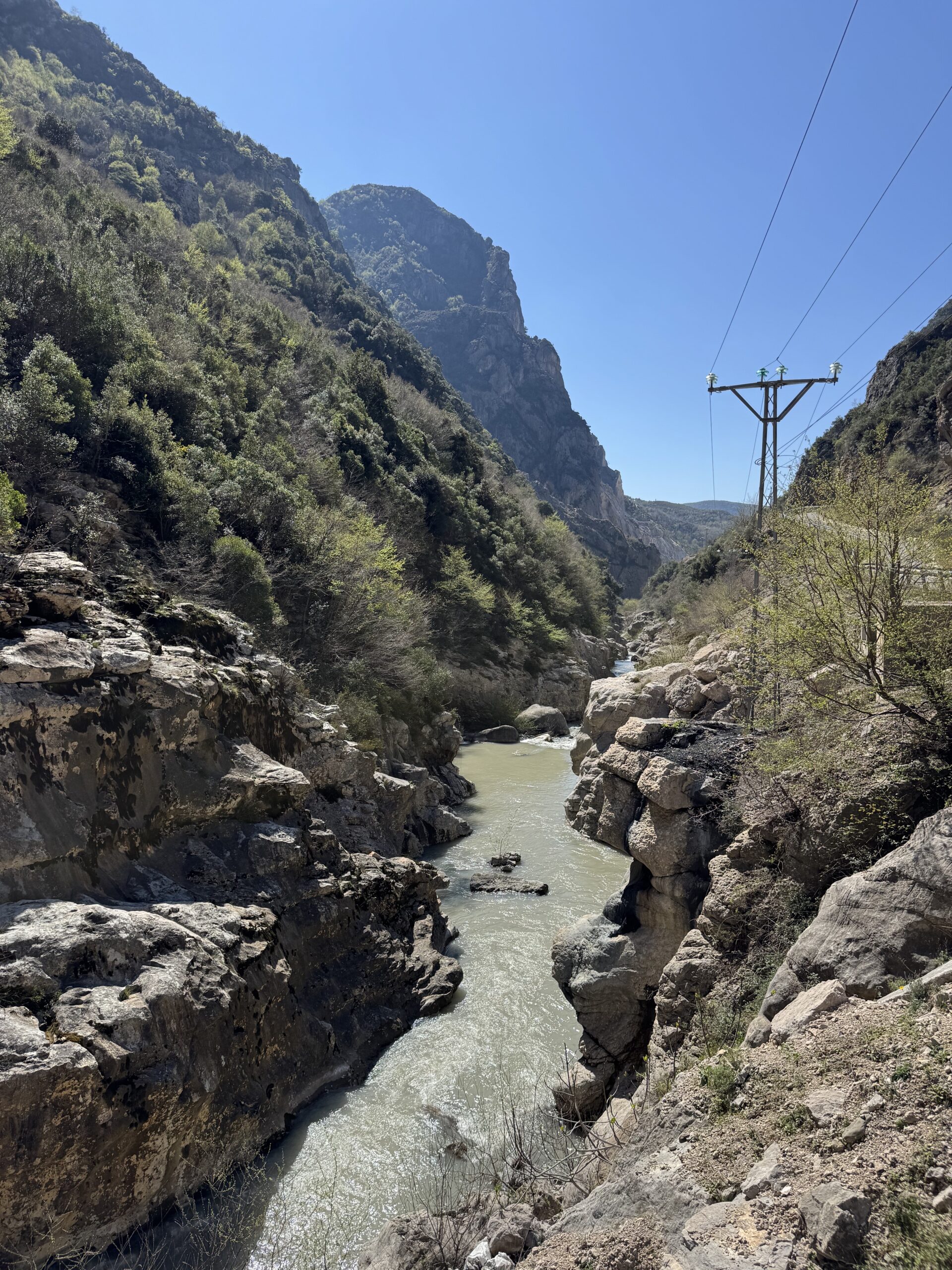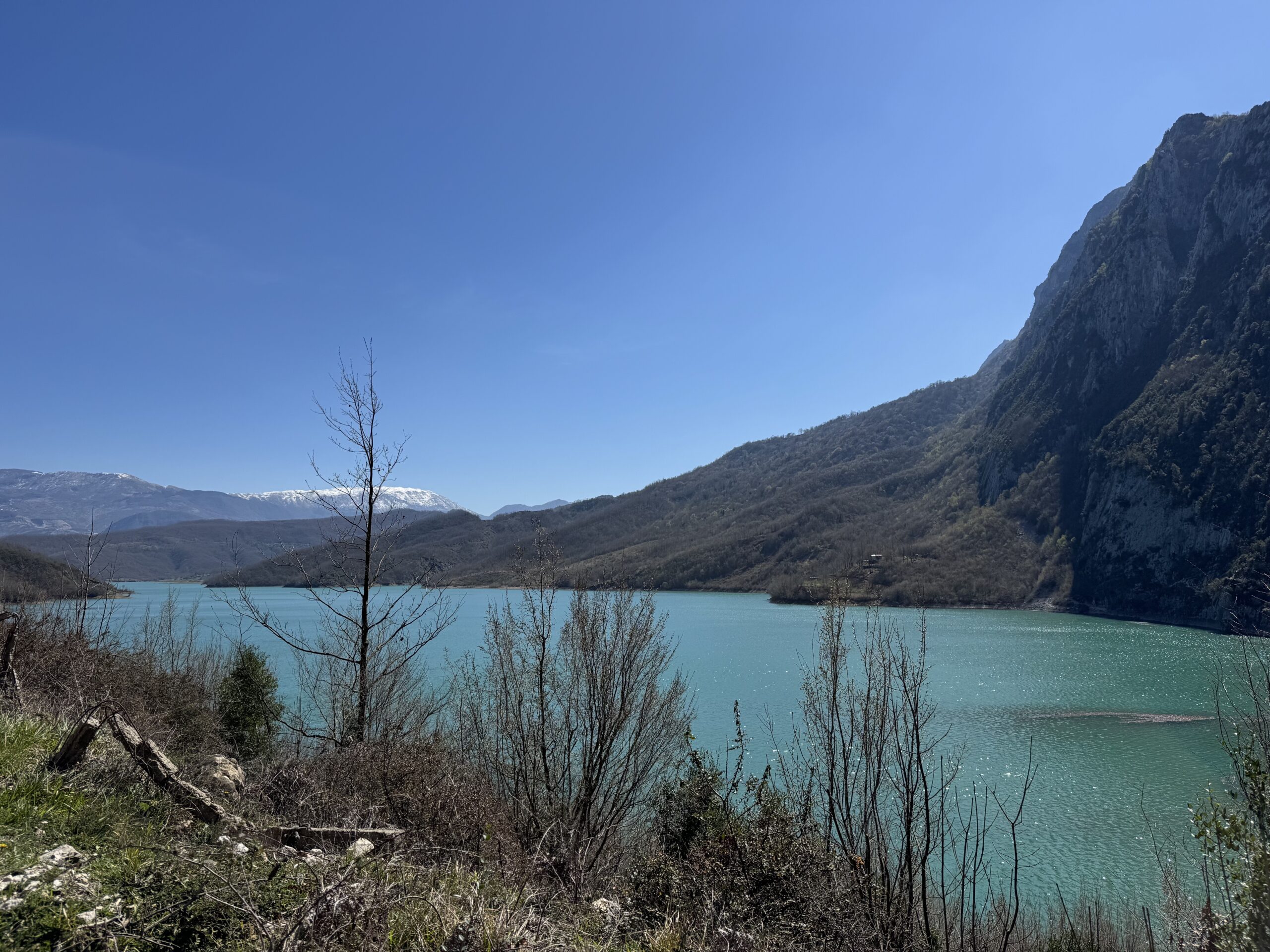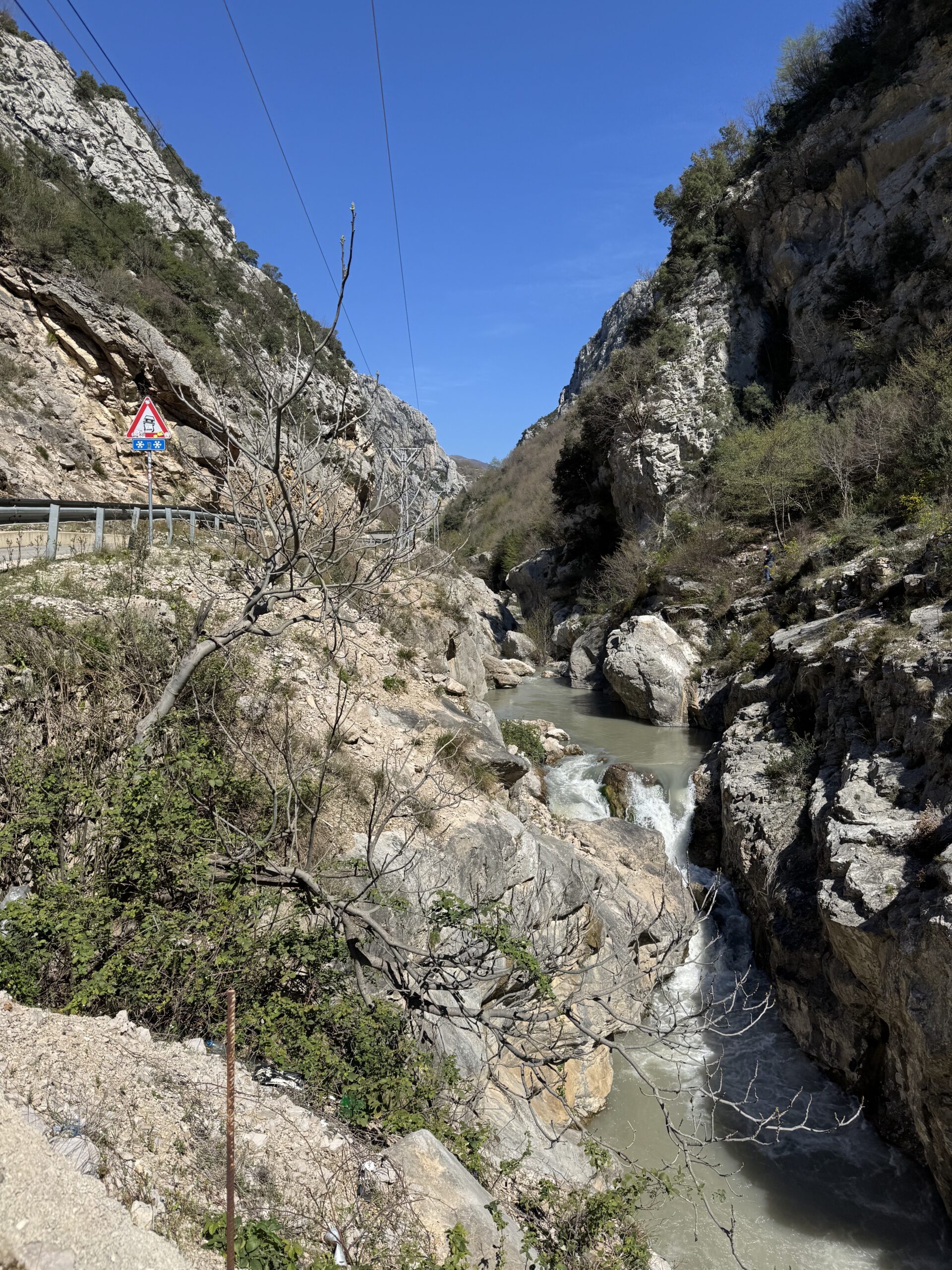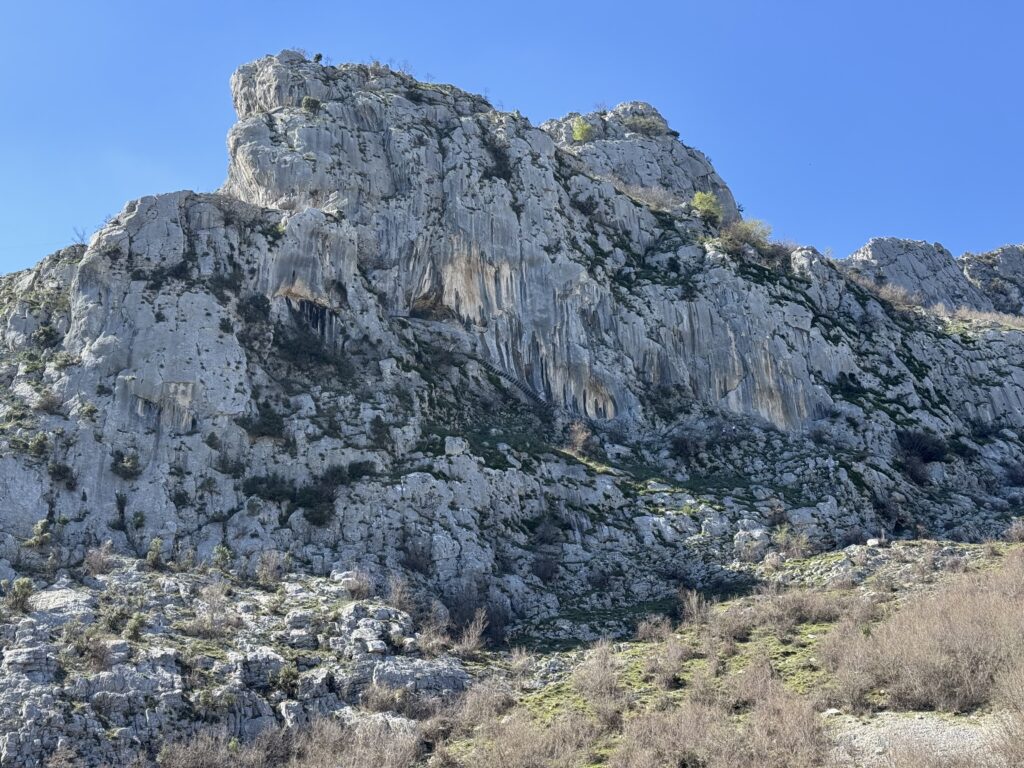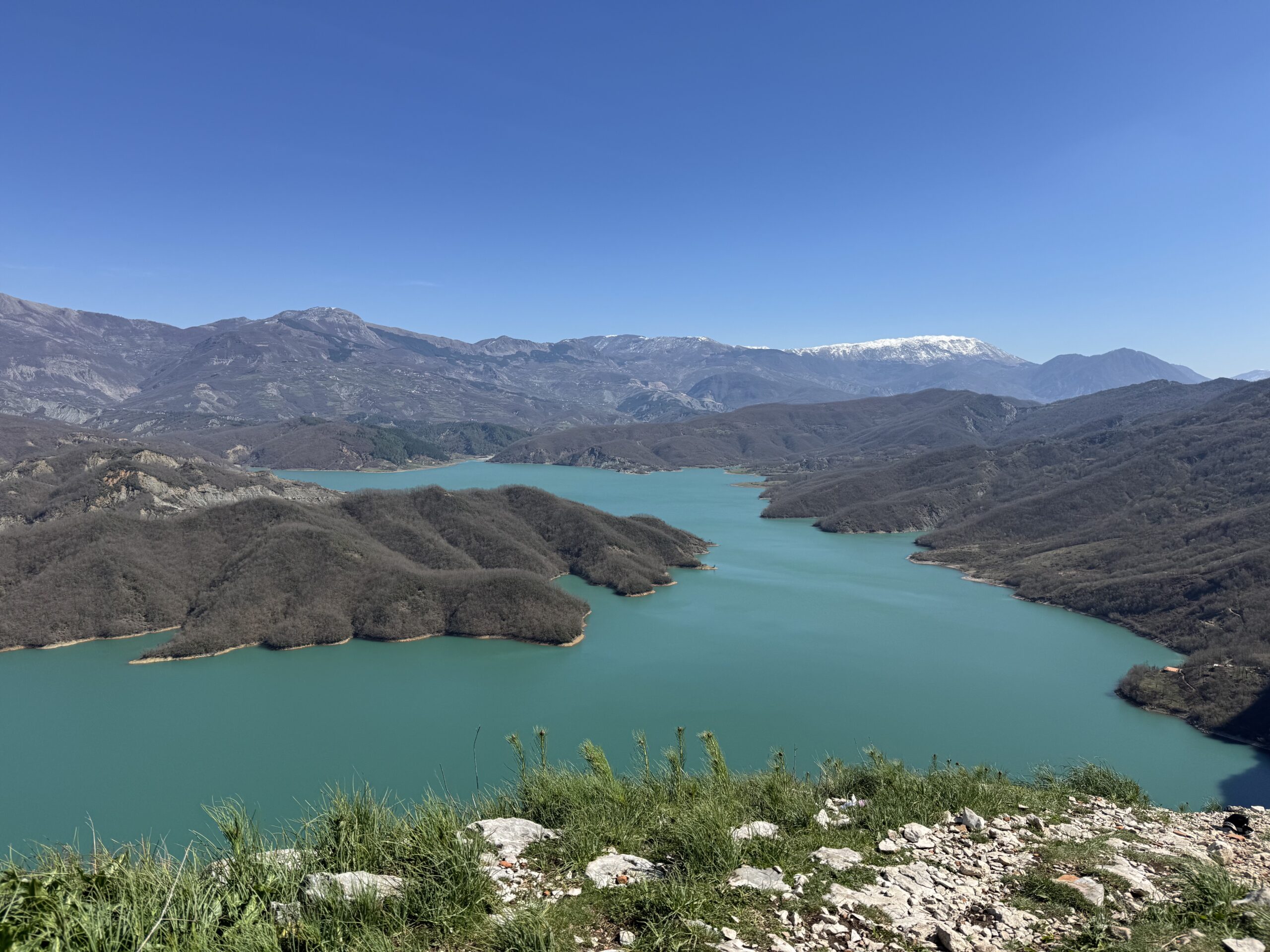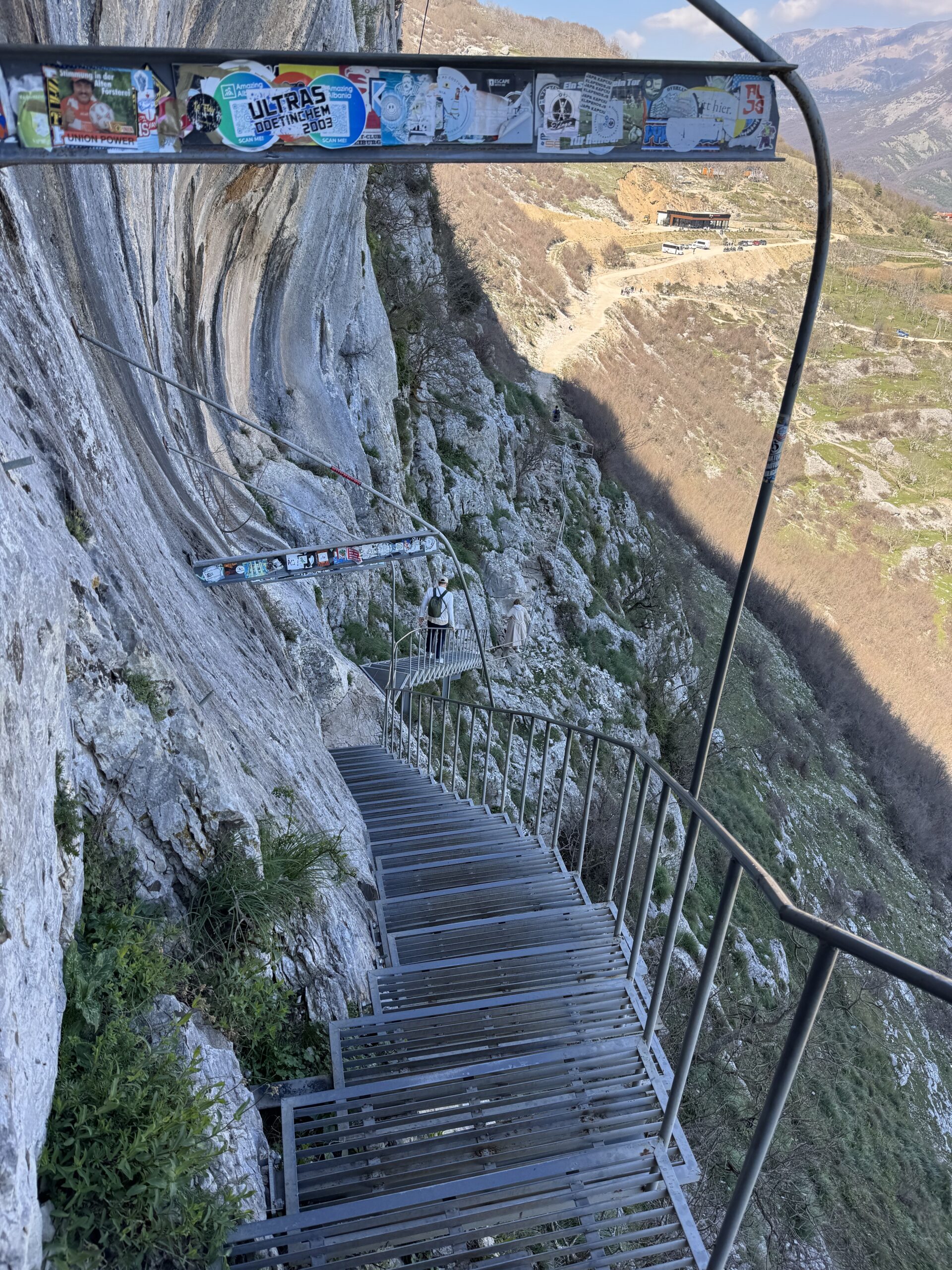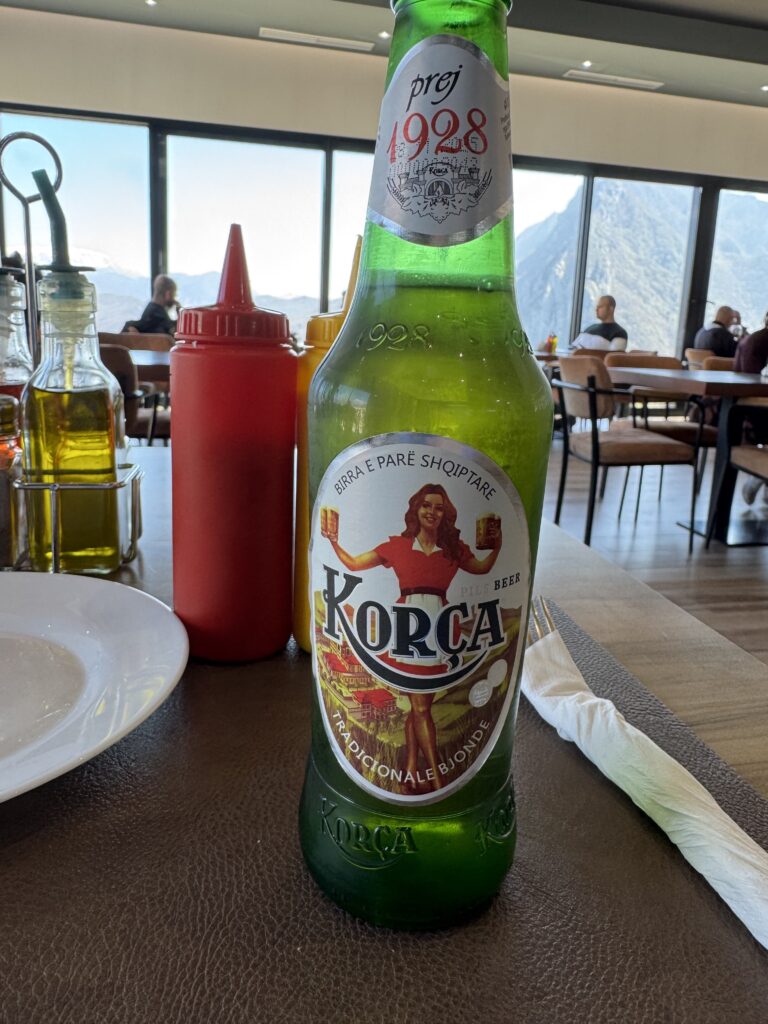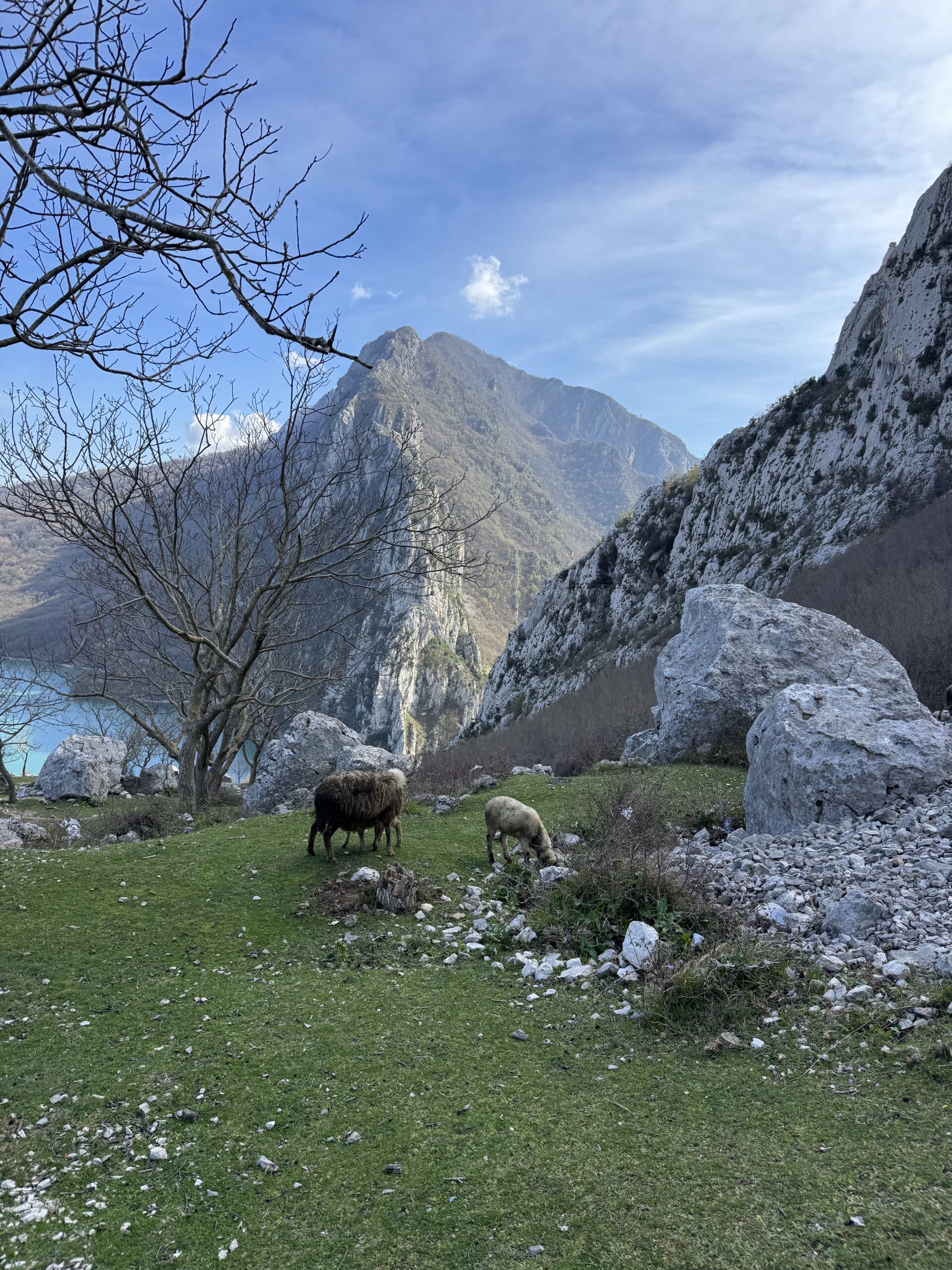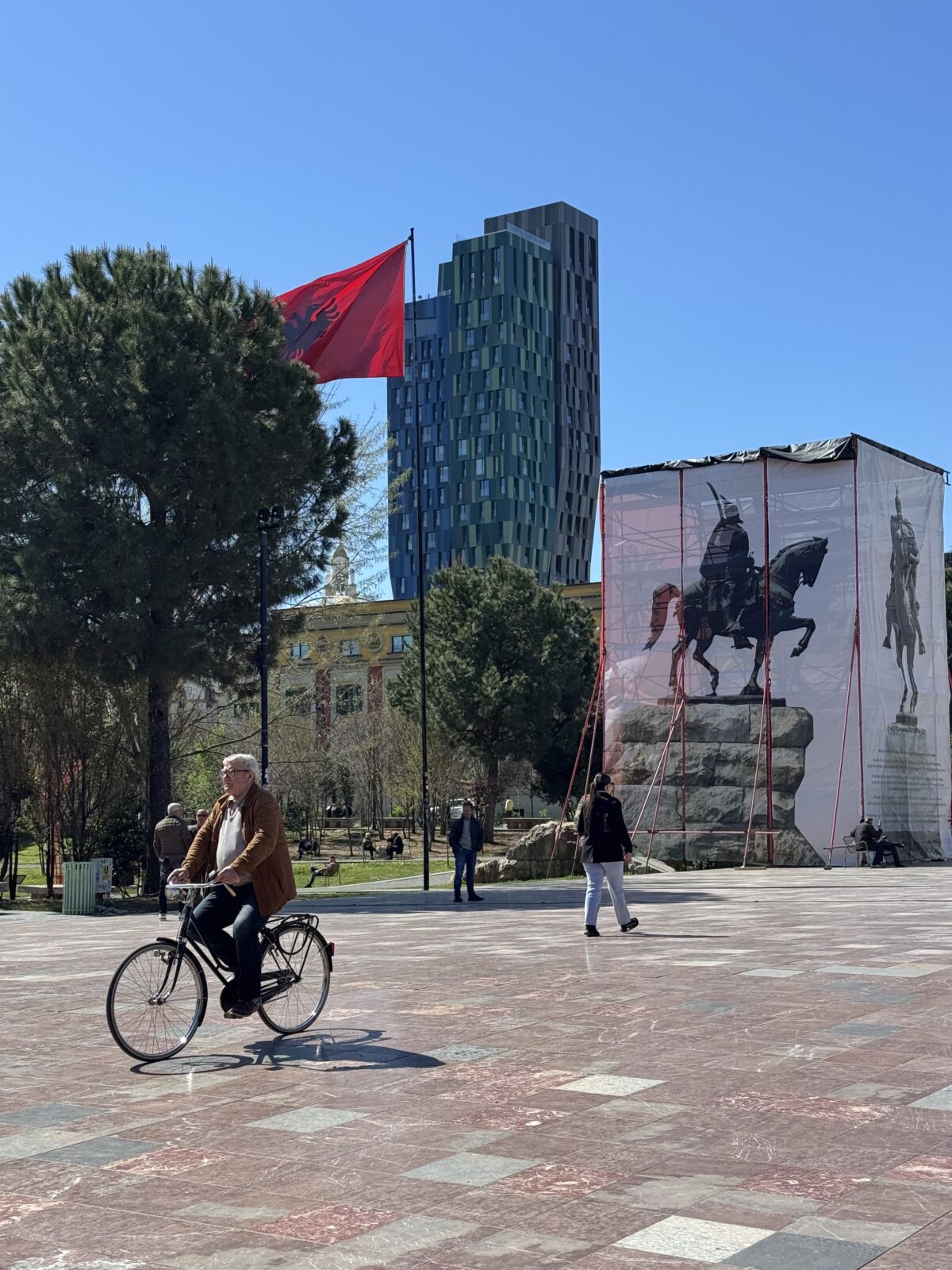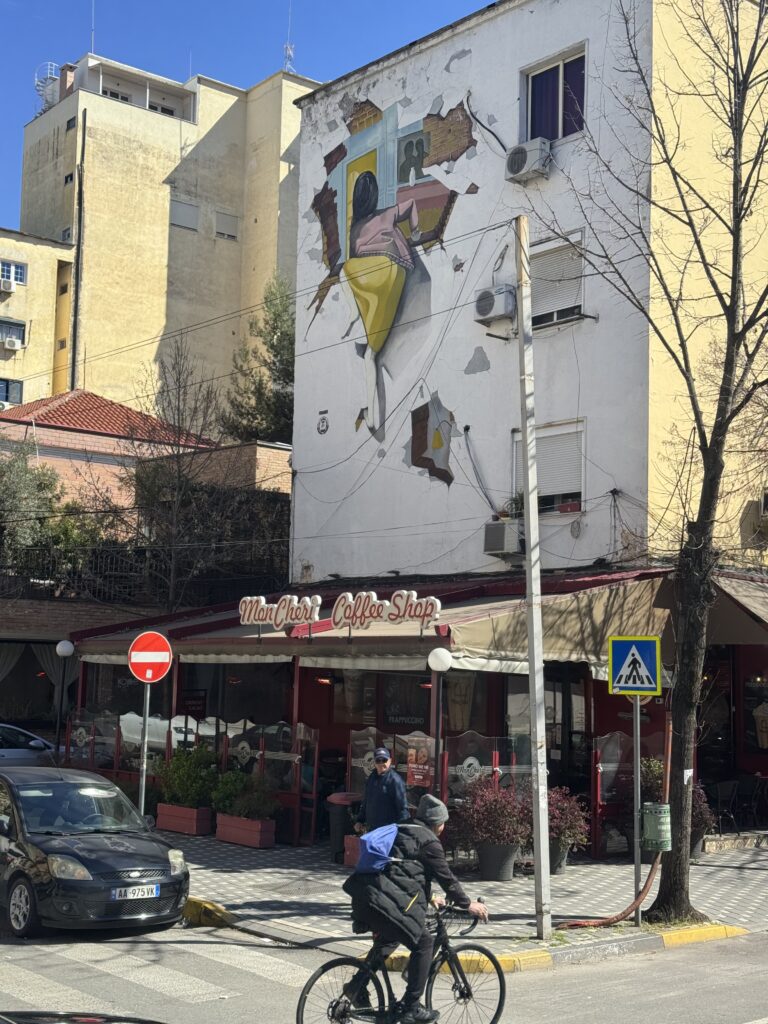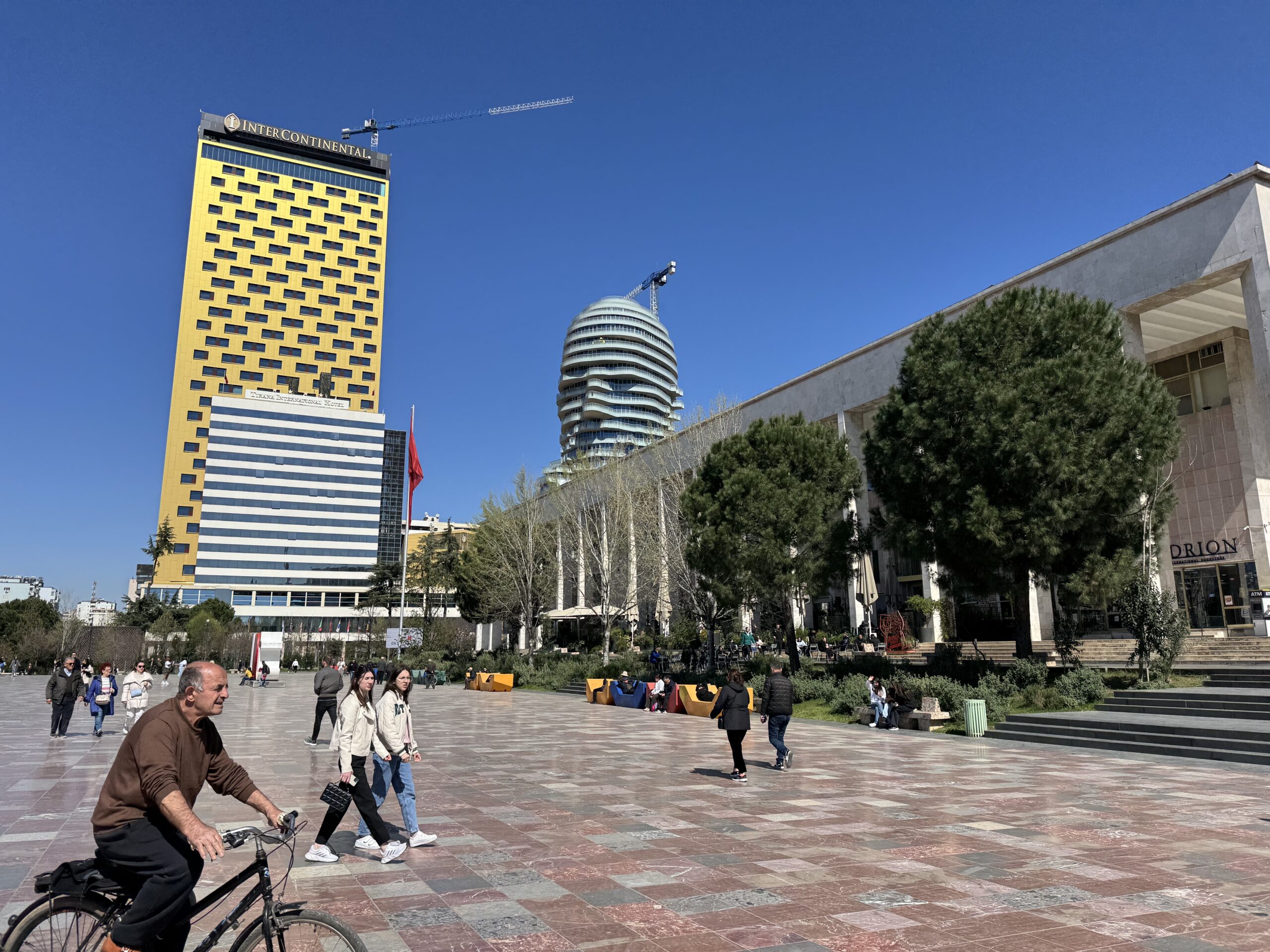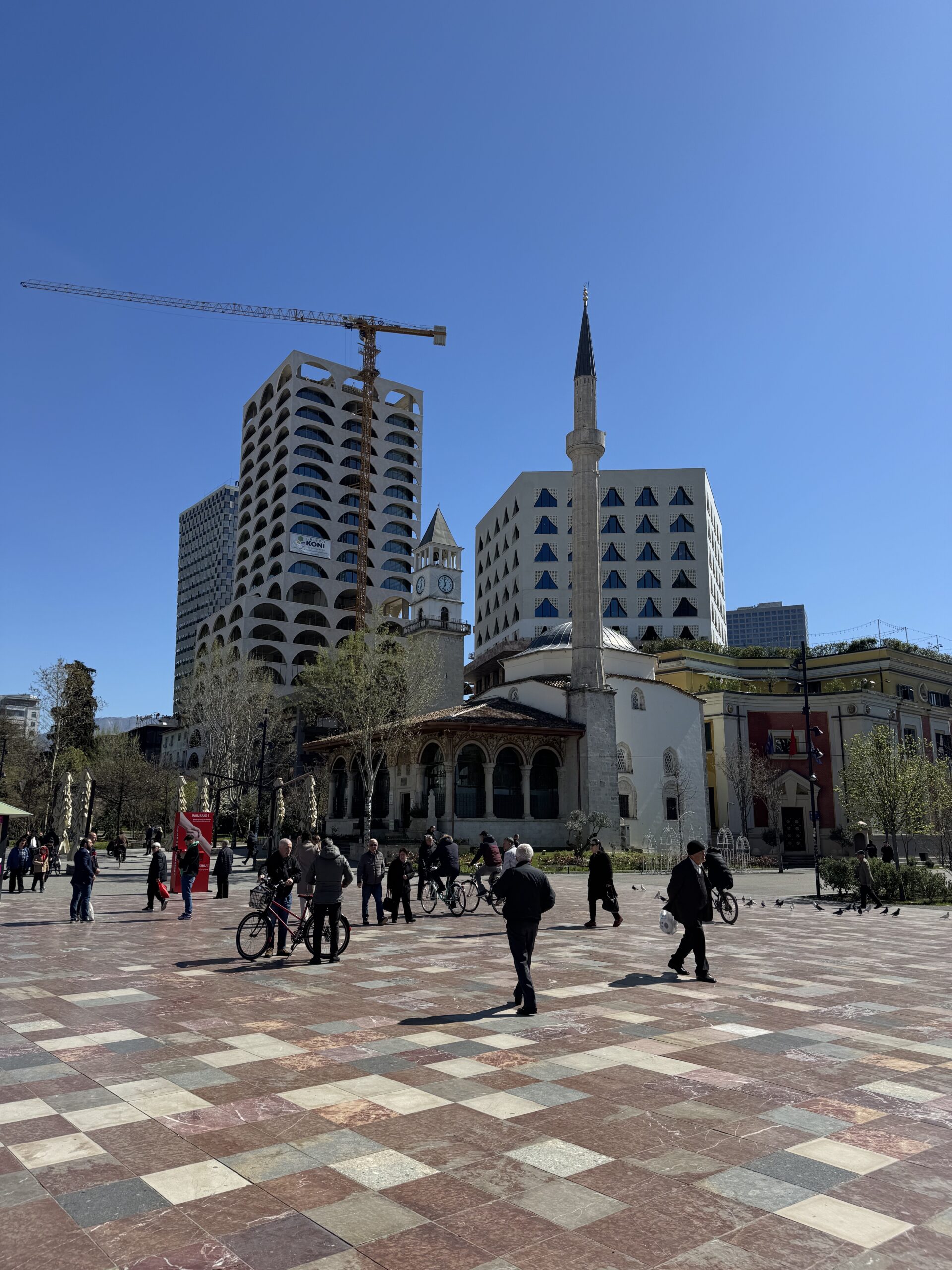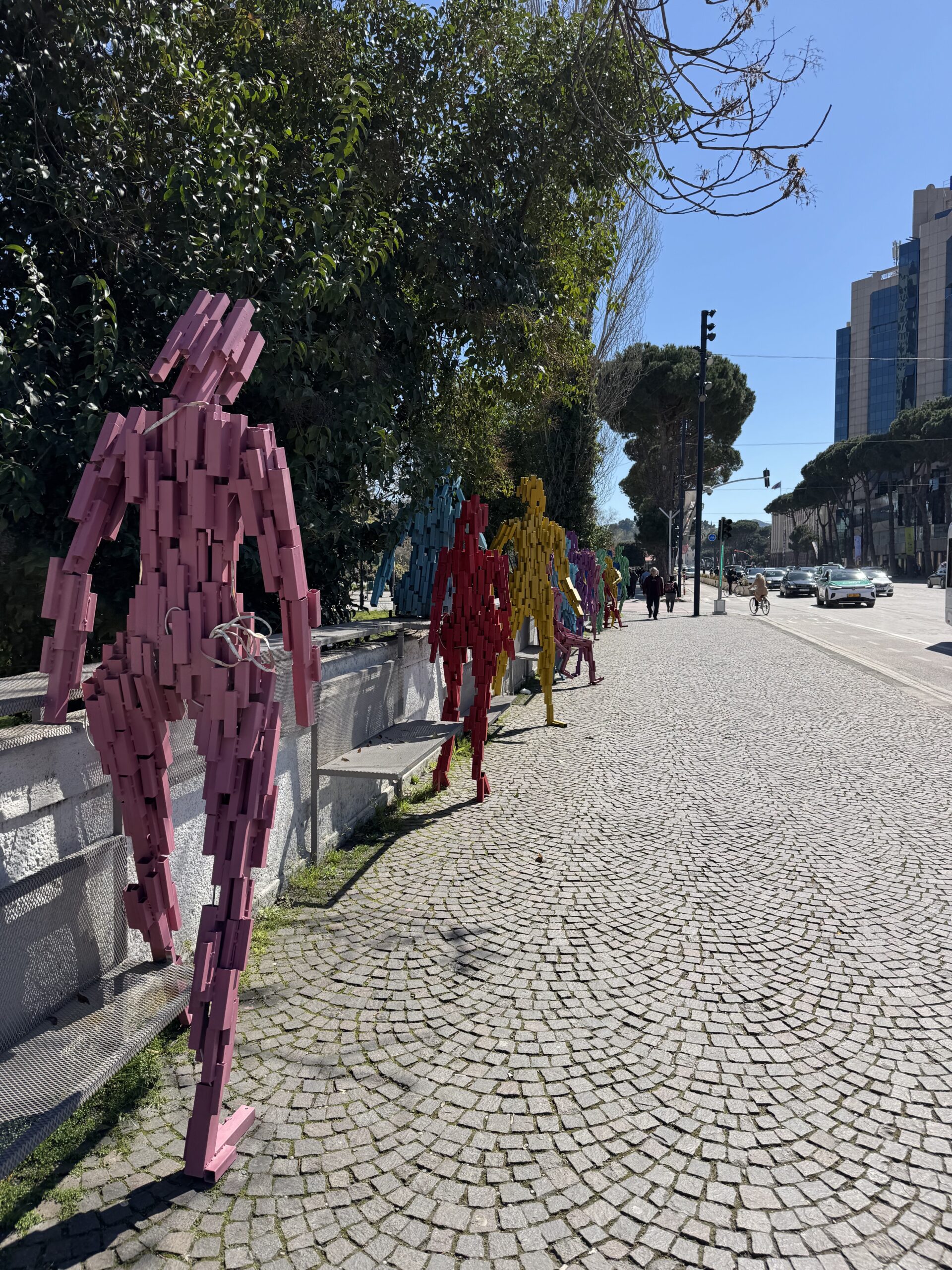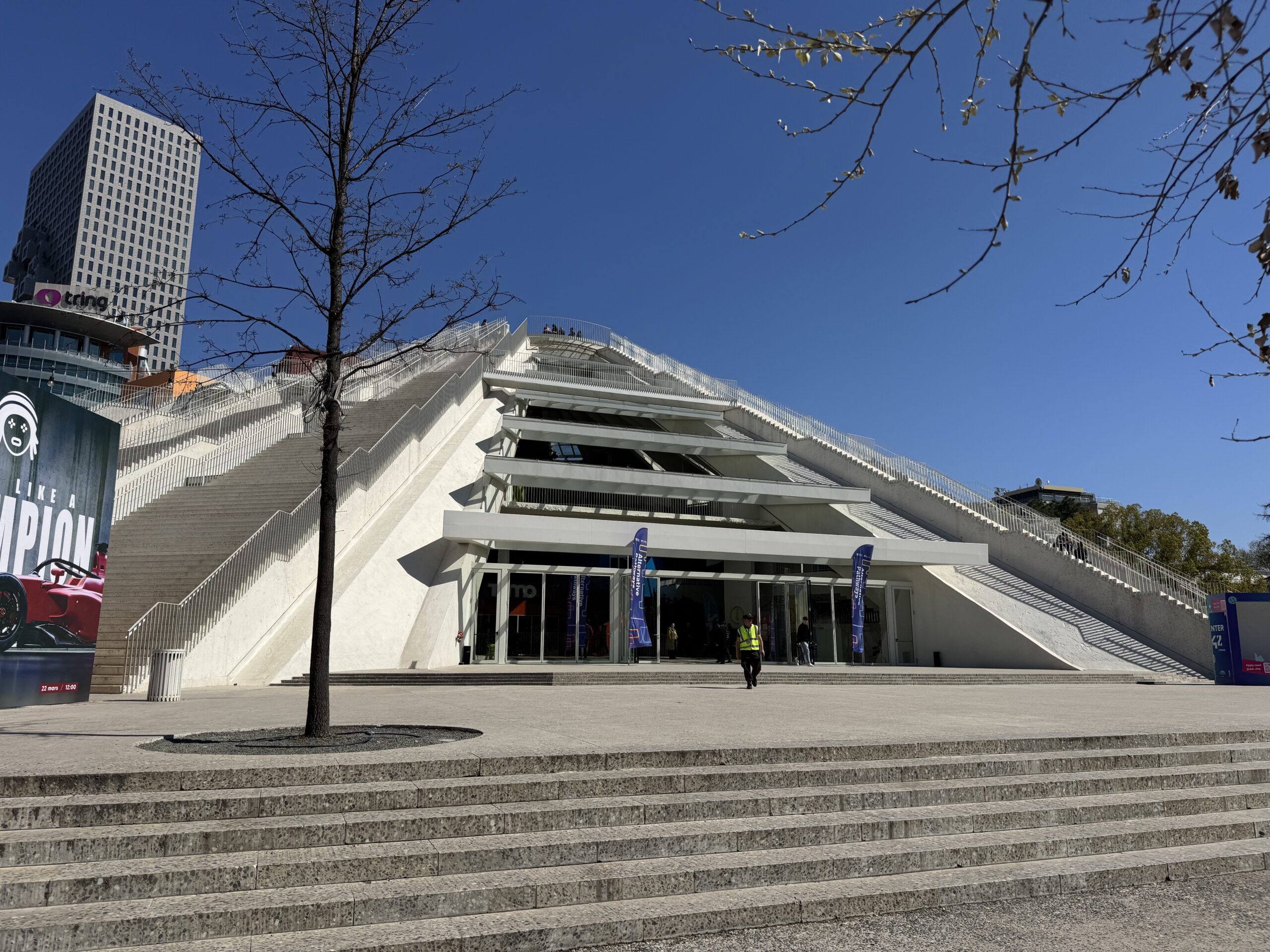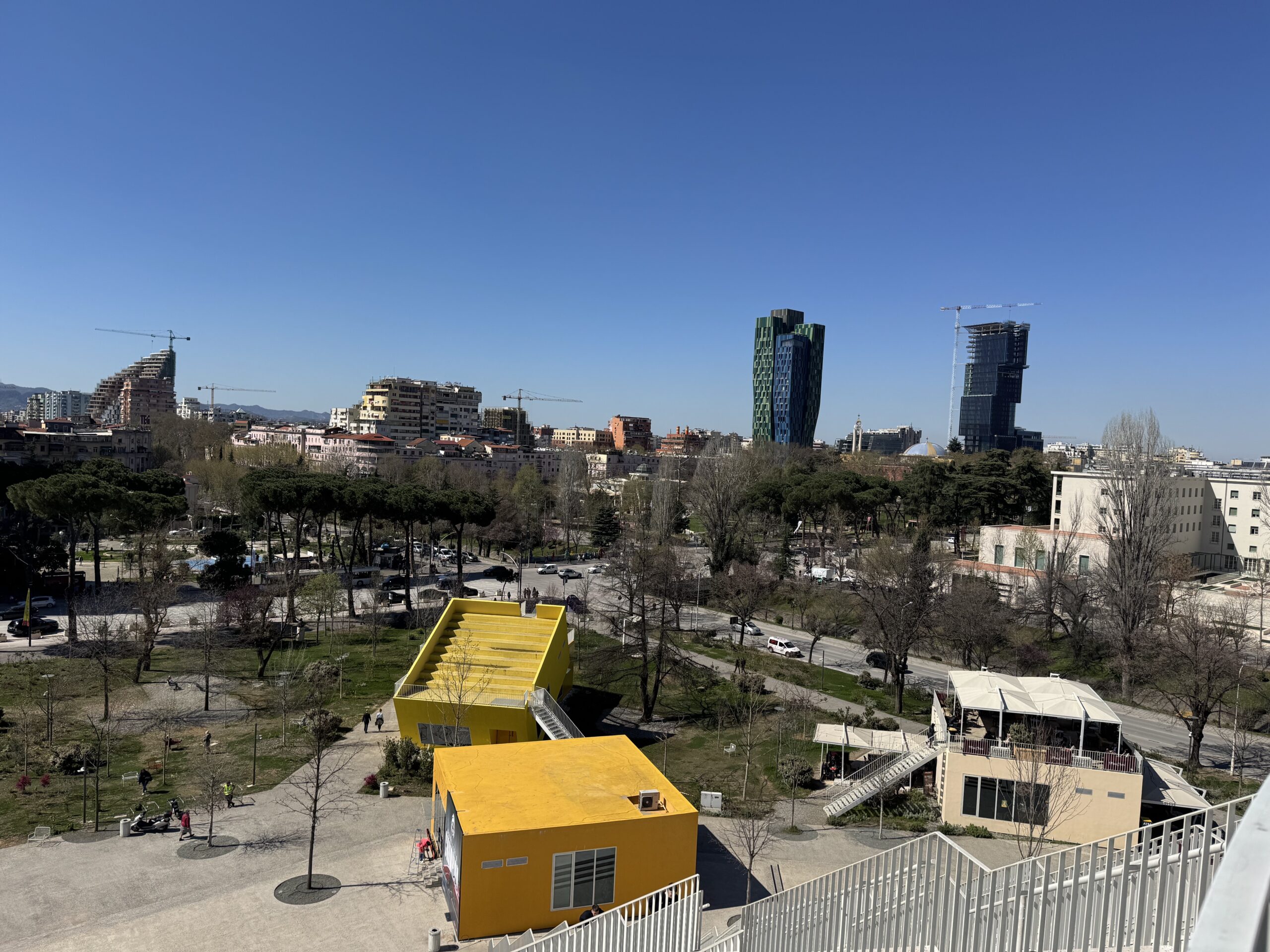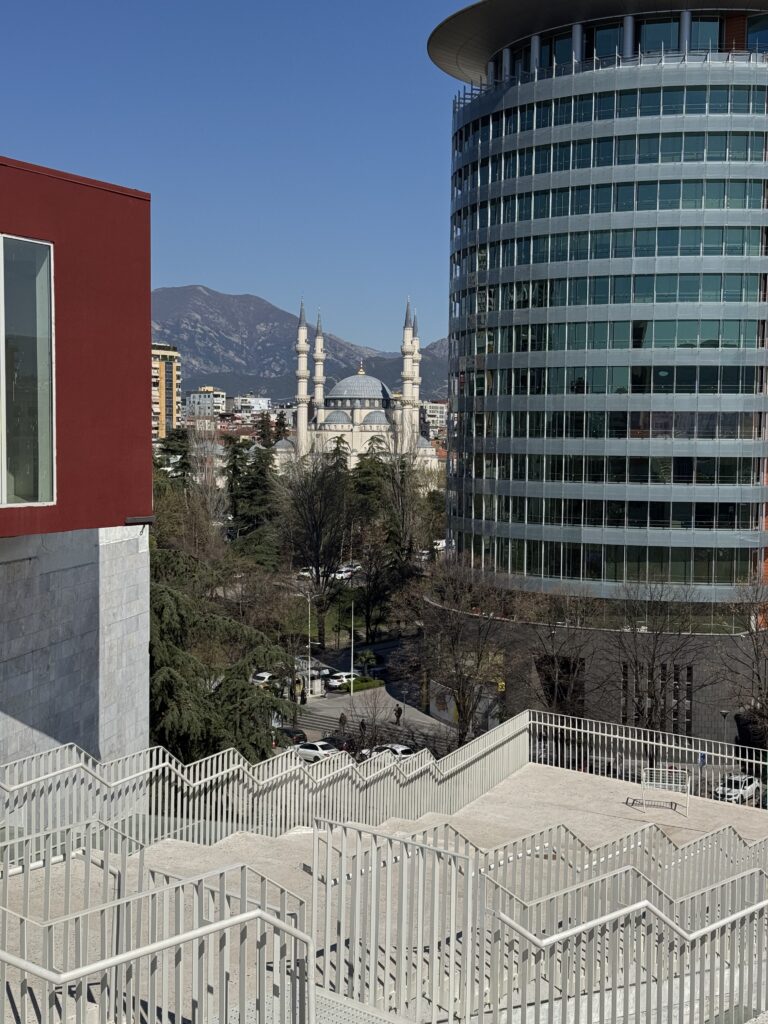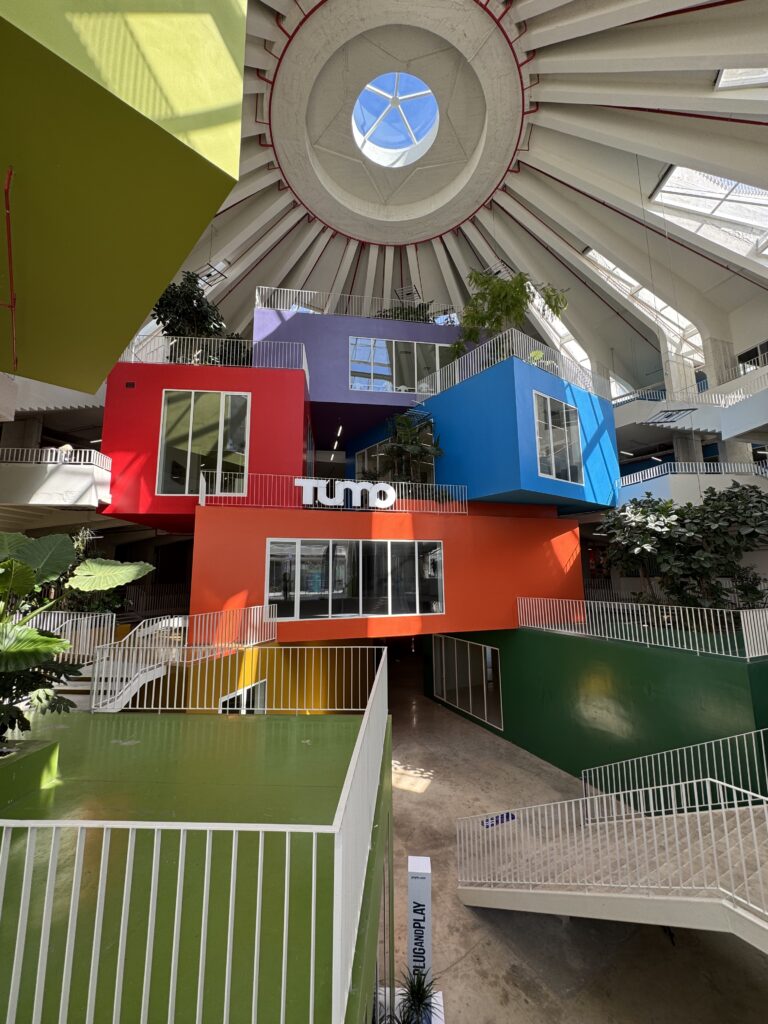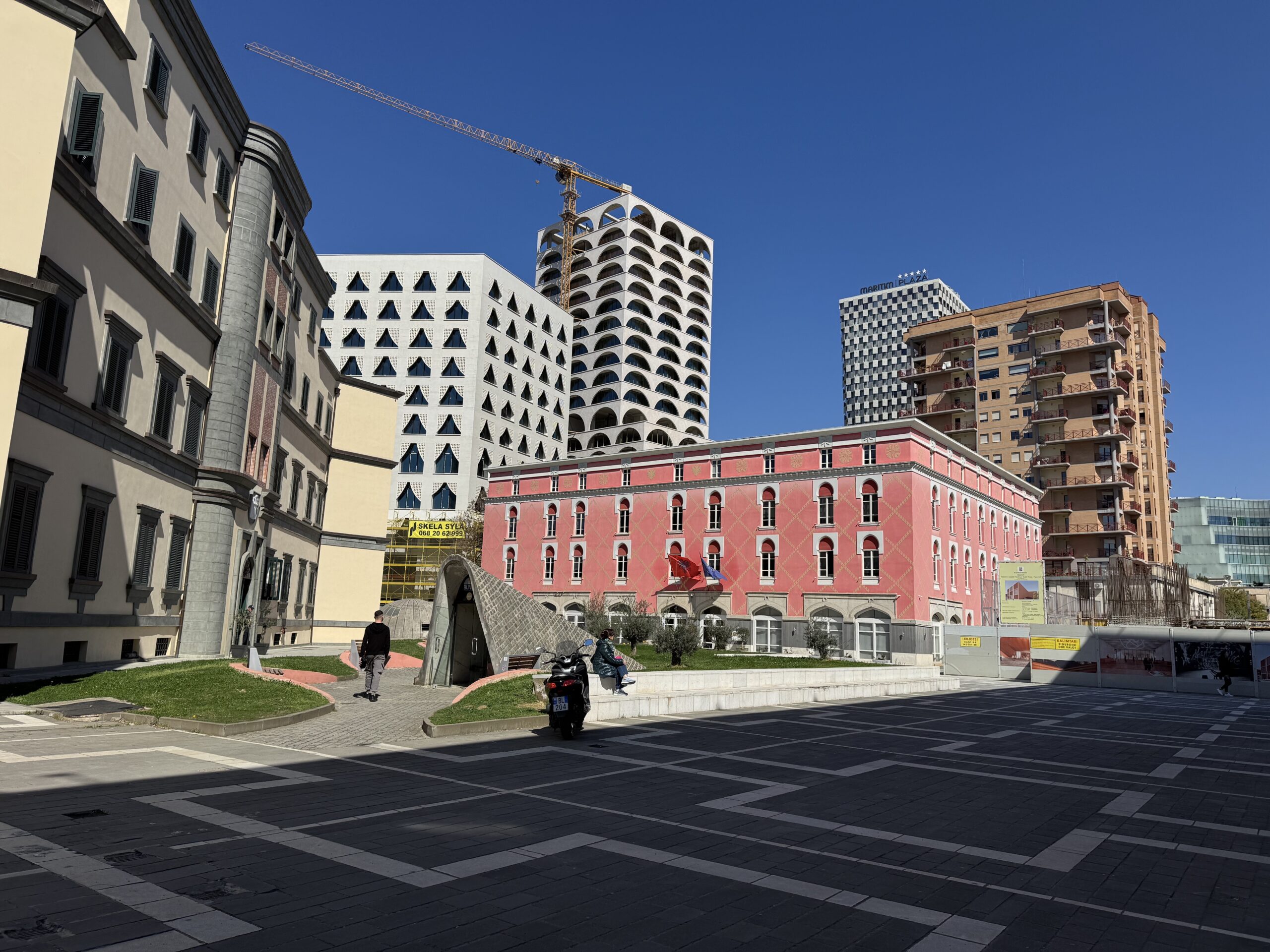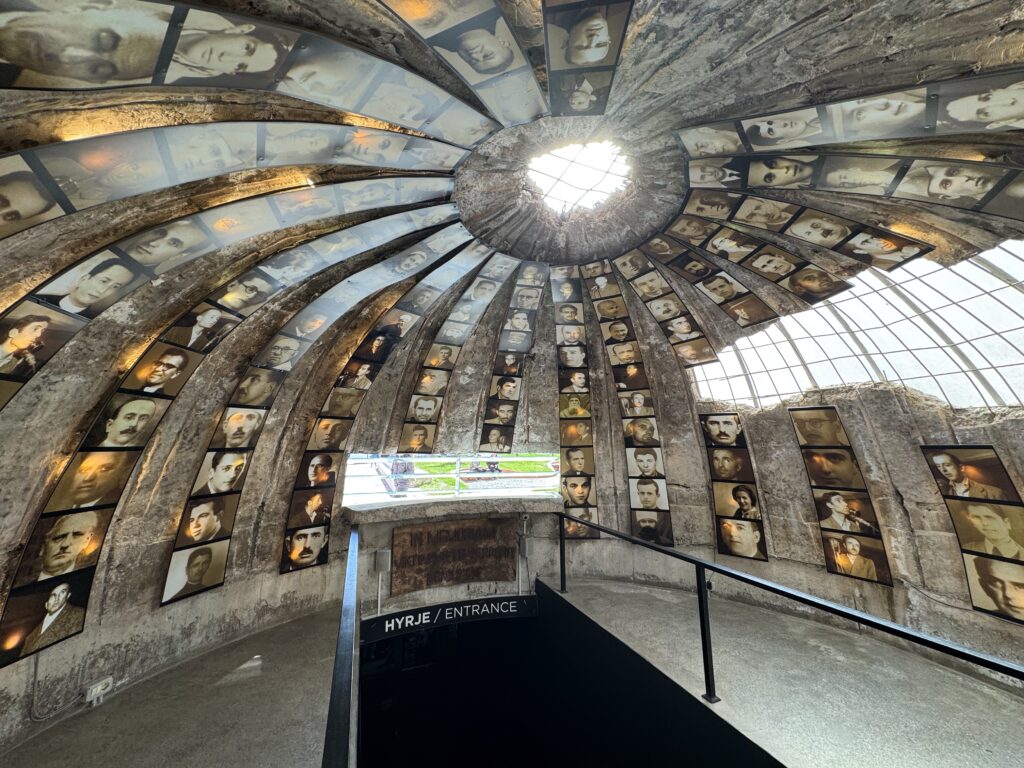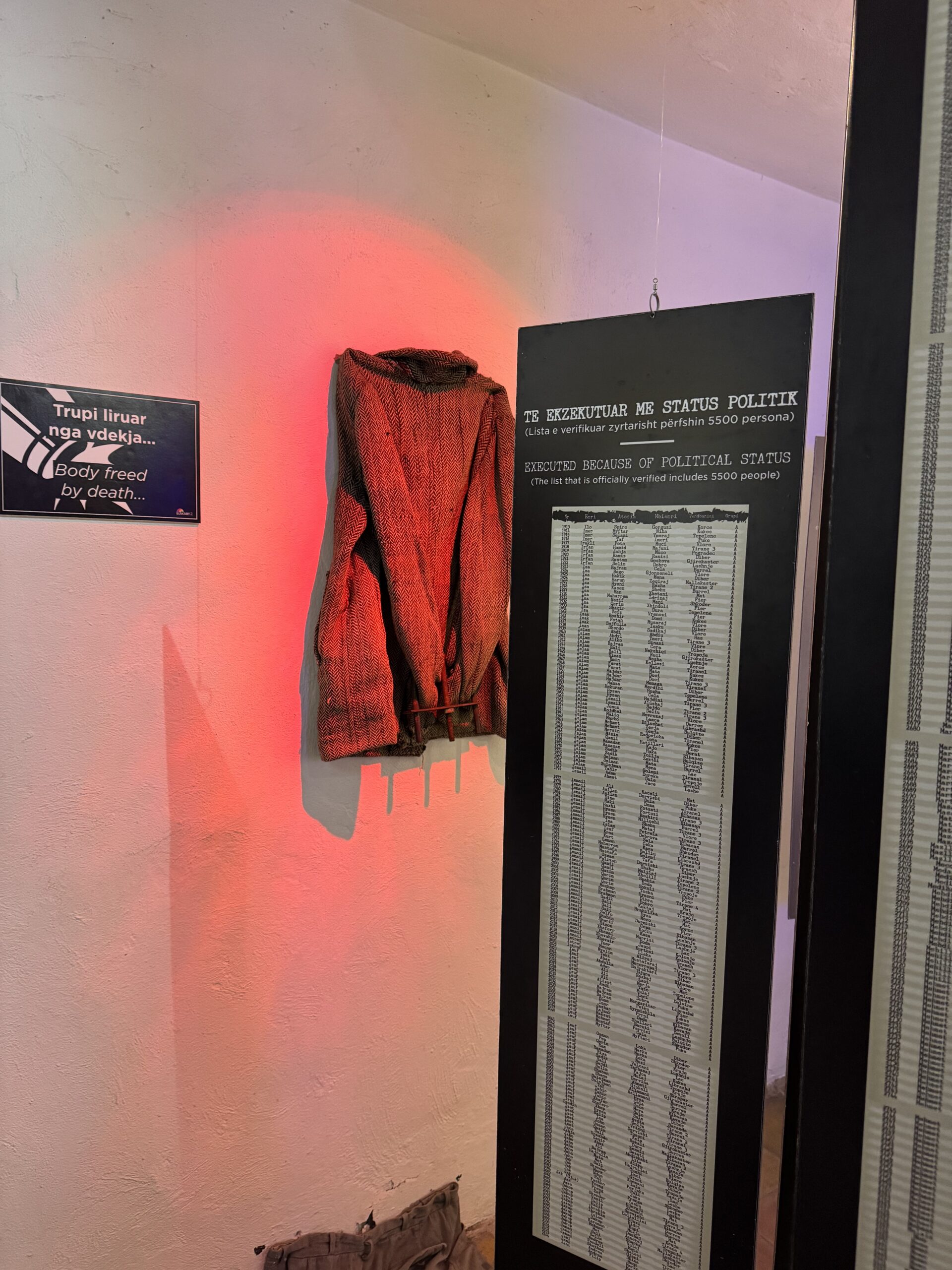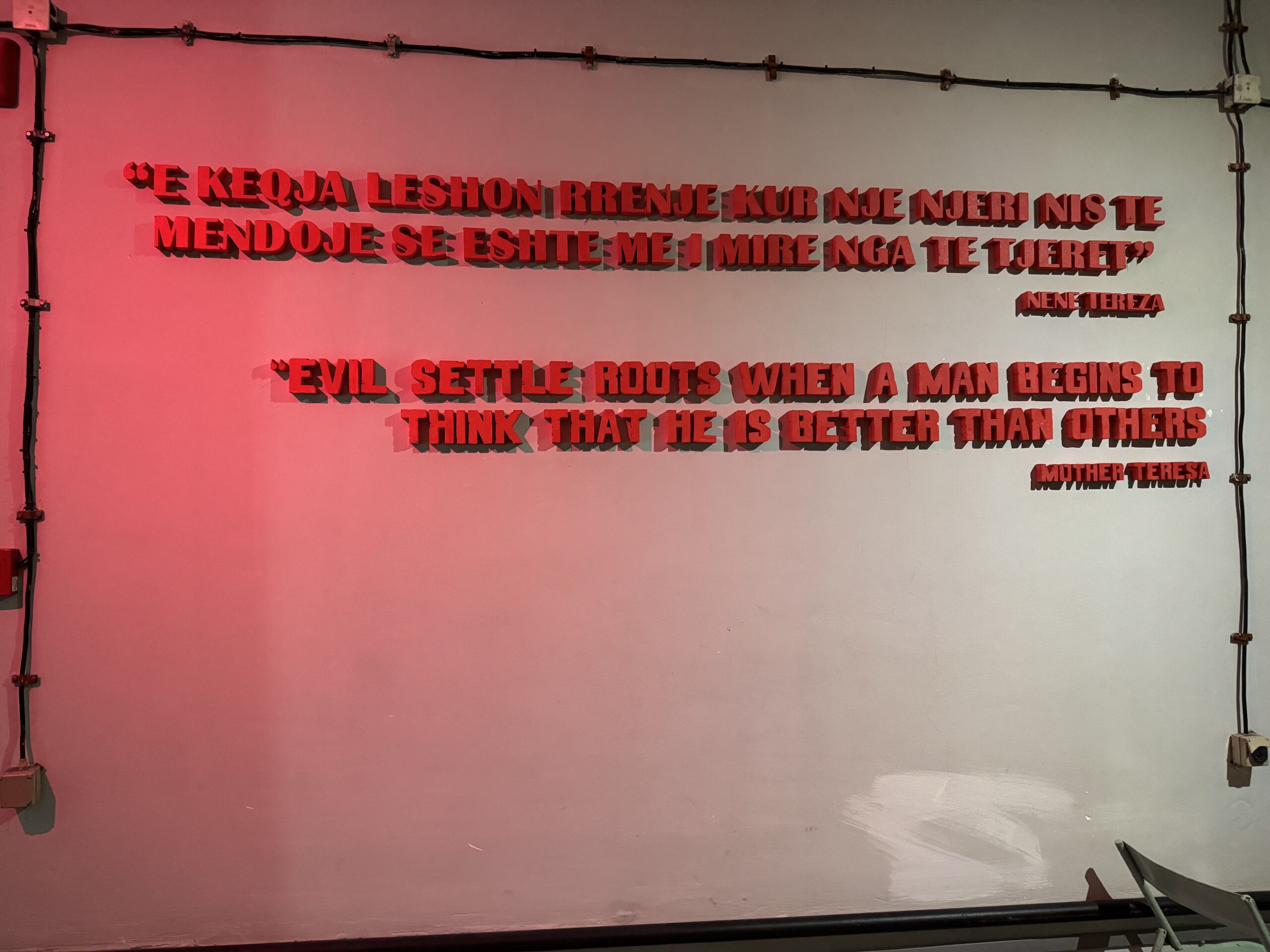On my last full day in Albania, before taking a flight that left at 6:55 am, I took a day trip from Tirana to Gjirokastër, a cool three hours away by car. Who needs rest, anyway? That’s not what my vacation days are for.
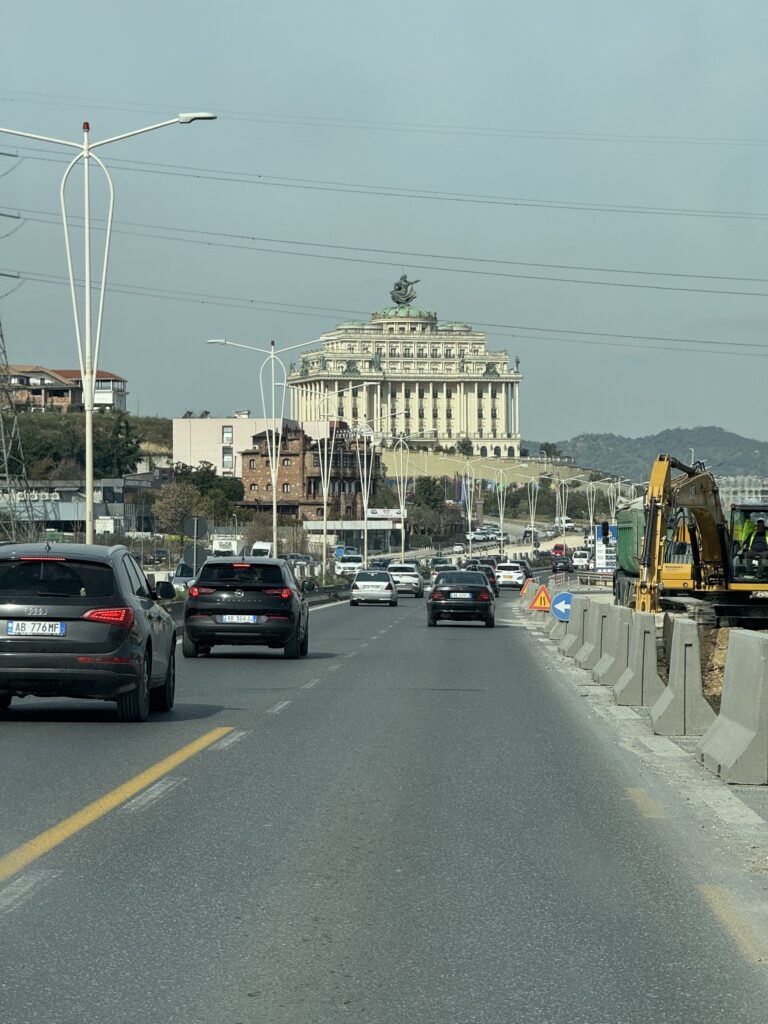
We started by driving west toward Durrës. Incidentally, if I hadn’t been there in March, I would have likely tried for a day trip there to go to the beach, since the Albanian Riviera is one of the next big destinations of Europe and looks spectacular. But, more importantly, a highlight of that drive is getting to pass the Amadeus Palace. This article is going to say it more eloquently than I can, but basically Albania got excited about tourism in 2011, whipped up some foreign investment, and built an insanely fancy hotel in the very outskirts of Tirana that never actually opened. It was a series of bizarre decisions and, if you’ve read this blog for any period of time, you will understand that I was beyond thrilled that we drove past it and I got to see it.
To find that linked article, by the way, I fully Googled “weird giant Albania hotel” and that was the first result, which is exactly what I was hoping for.
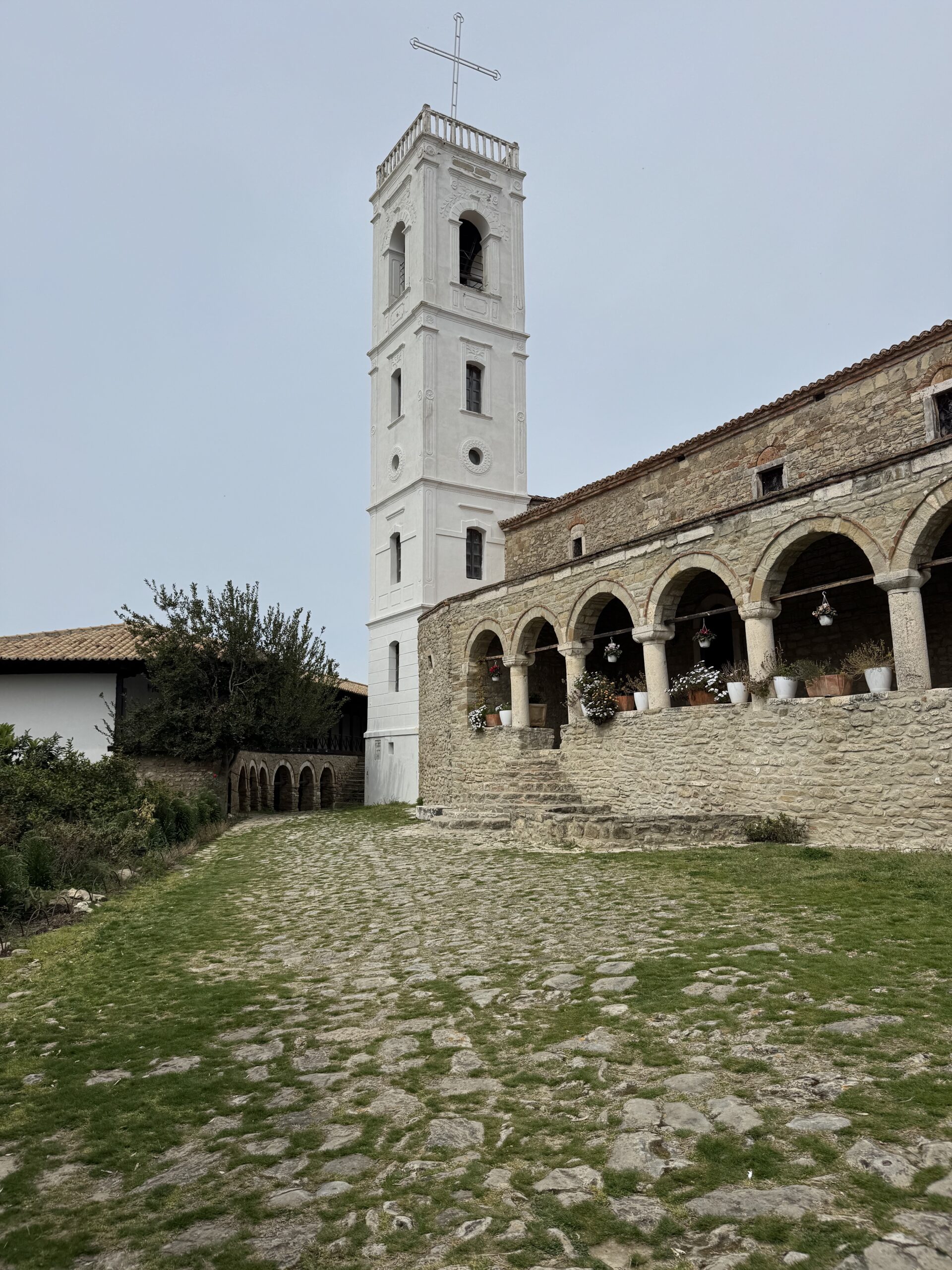
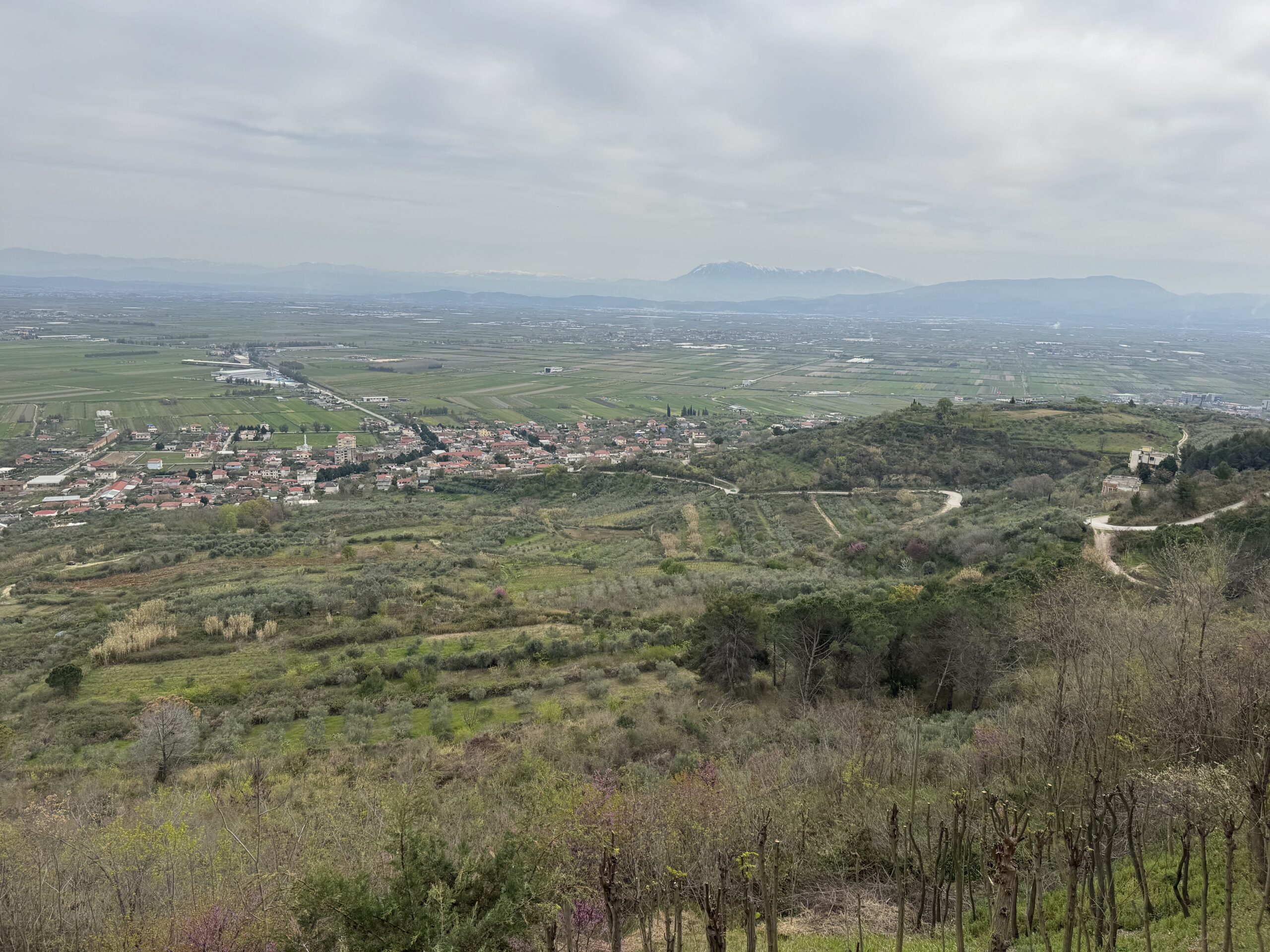
From there, we visited the Ardenica Monastery, which was a nice stop on the way to Gjirokastër. It was beautiful, with a good views of the landscape, which had vibes that were more similar to Tuscany than the mountainous ones I’d seen the two days prior. We got a quick coffee and hit the road again, continuing south.
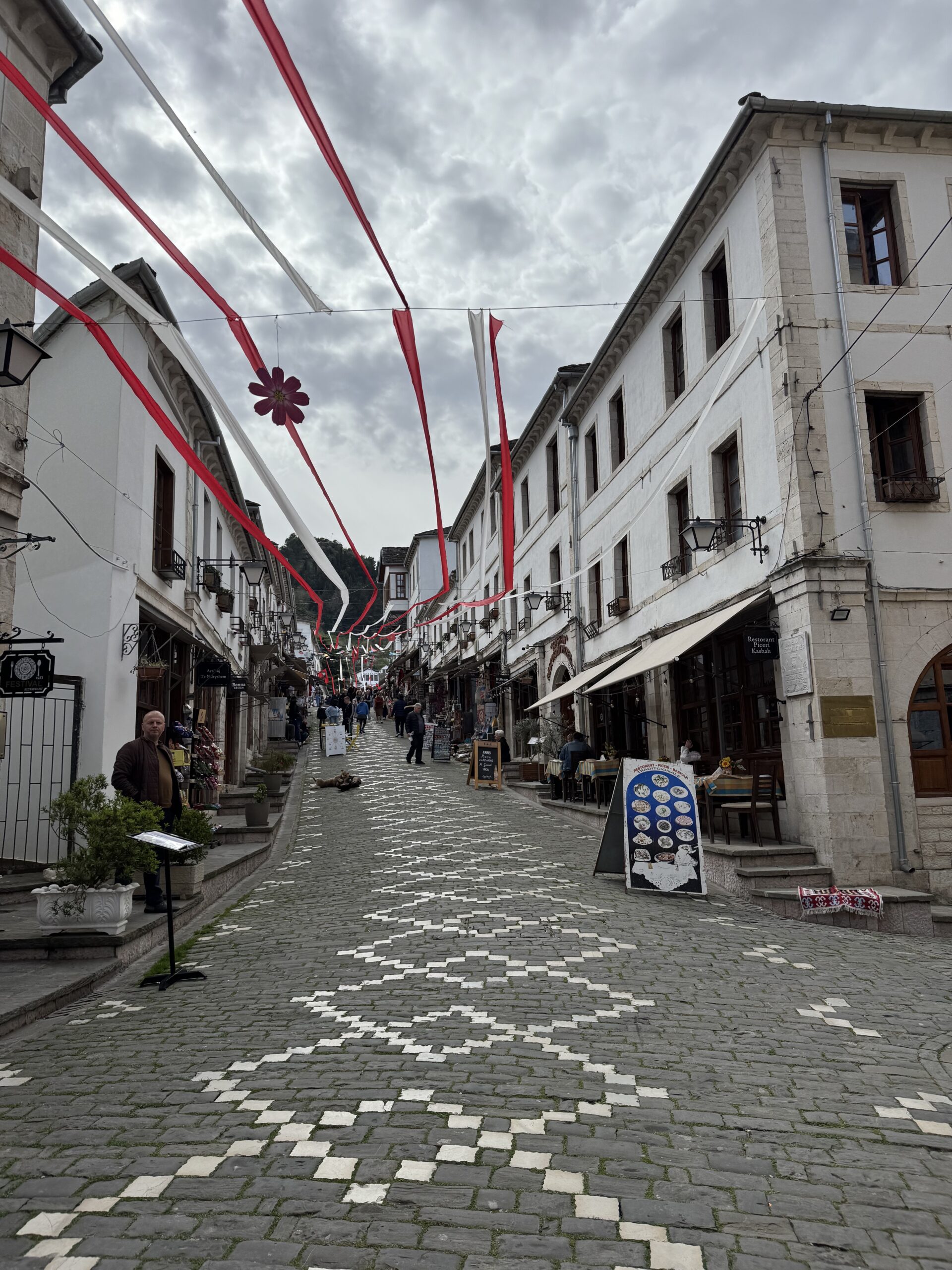
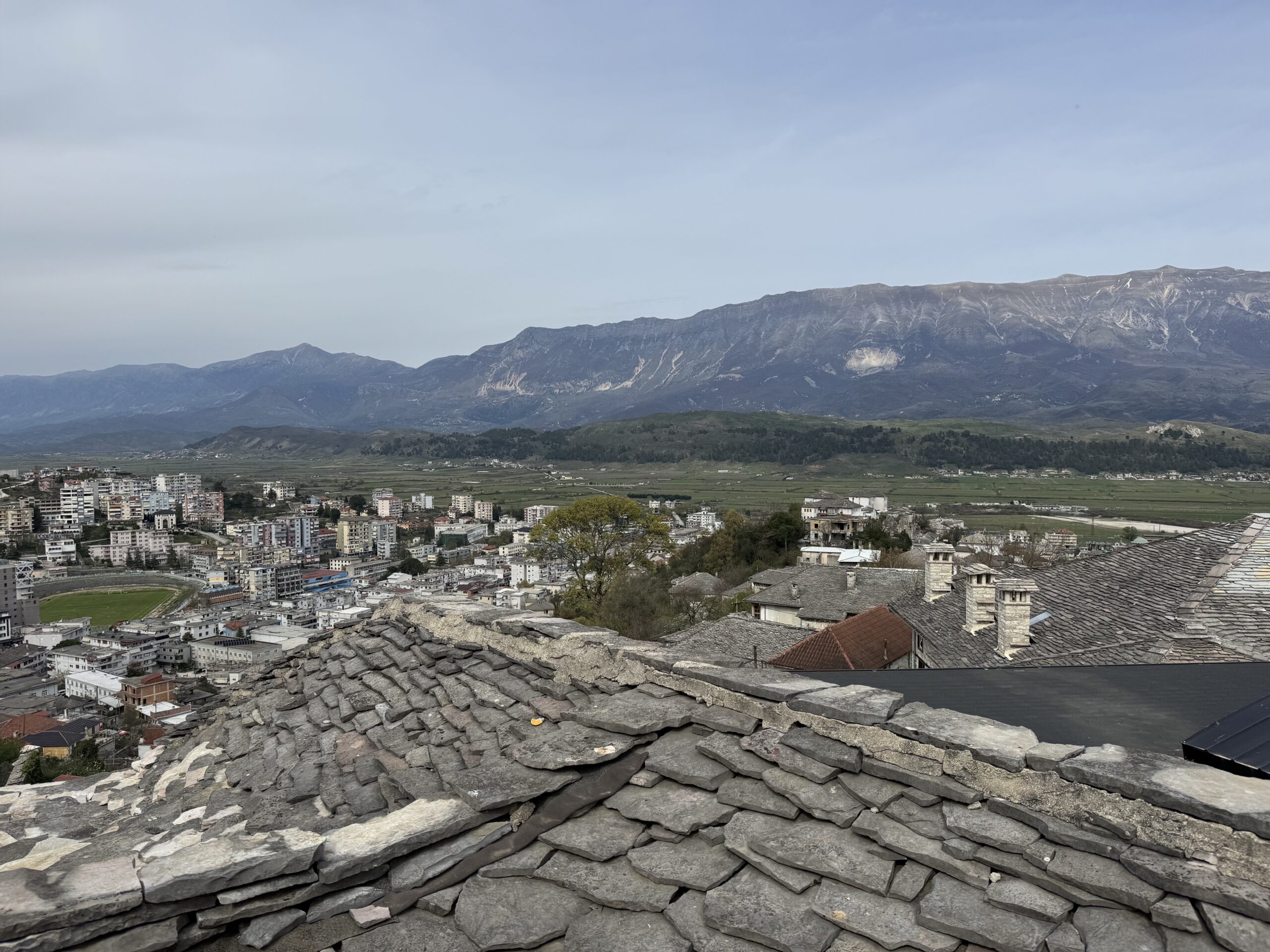
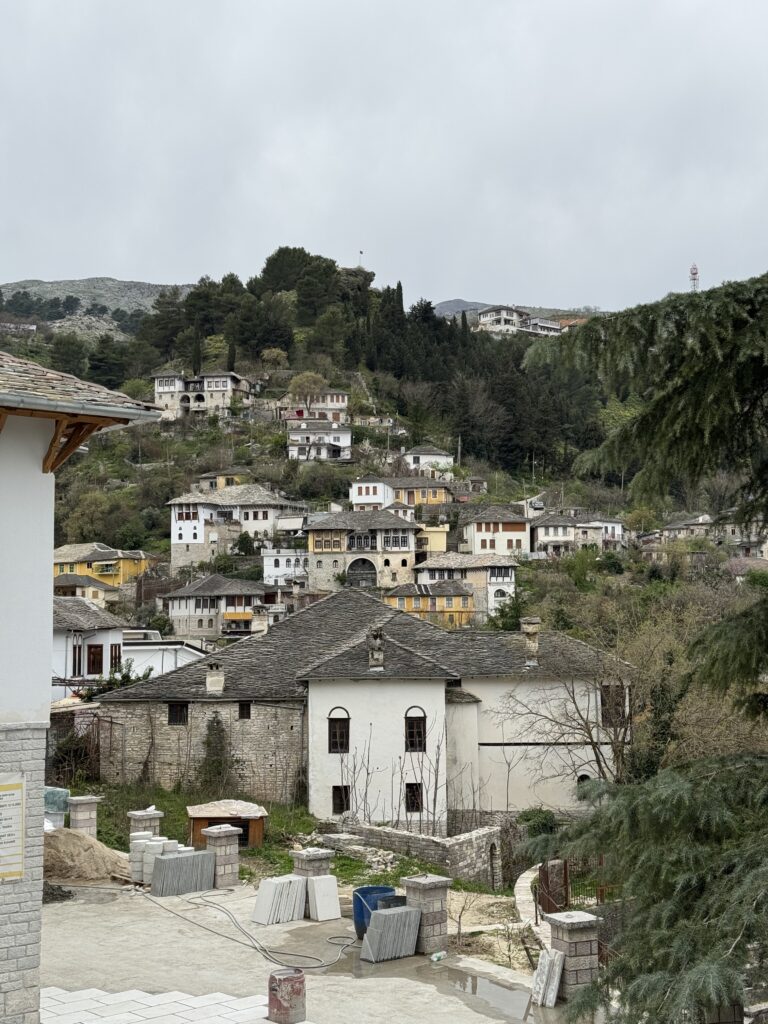
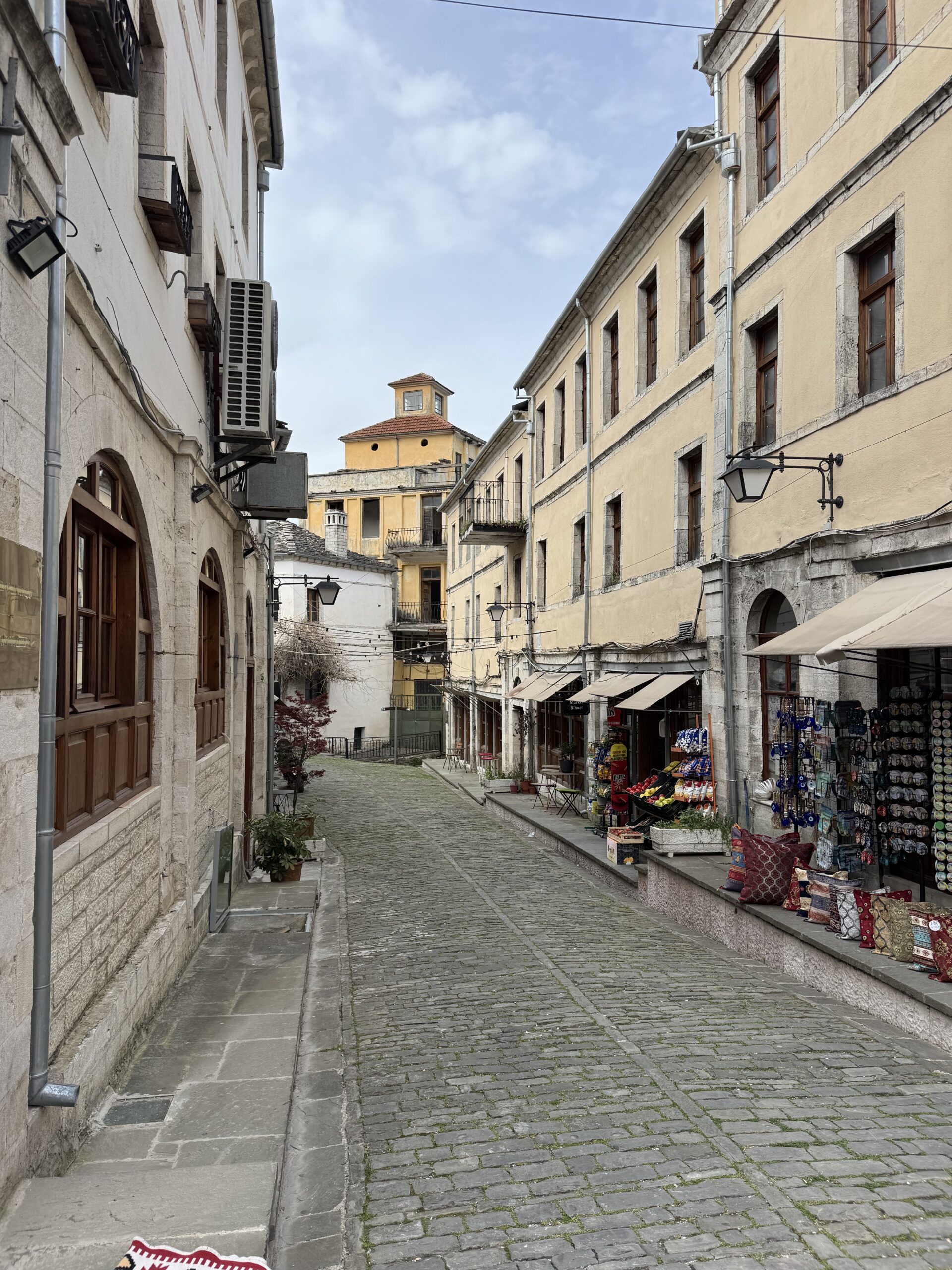
We started out by walking around Old Town and grabbing lunch at a place that had a nice view over the city. Similar to Berat, Gjirokastër has distinct architecture and the overall effect of all the buildings is quite striking. Also like Berat, it is a UNESCO site.
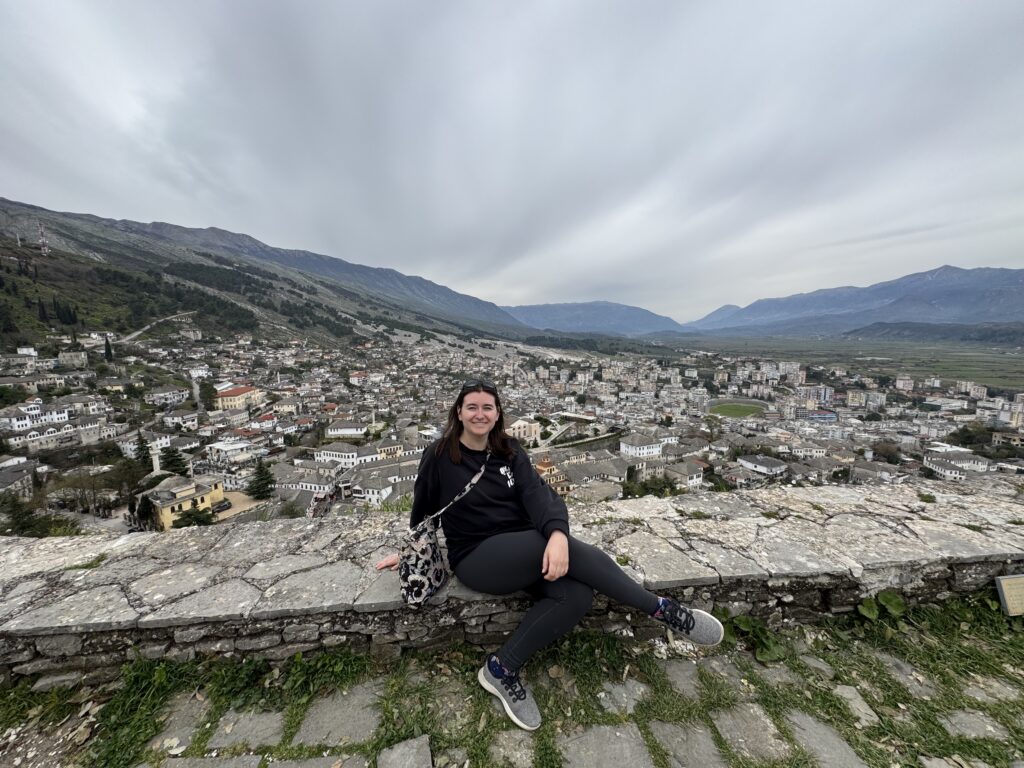
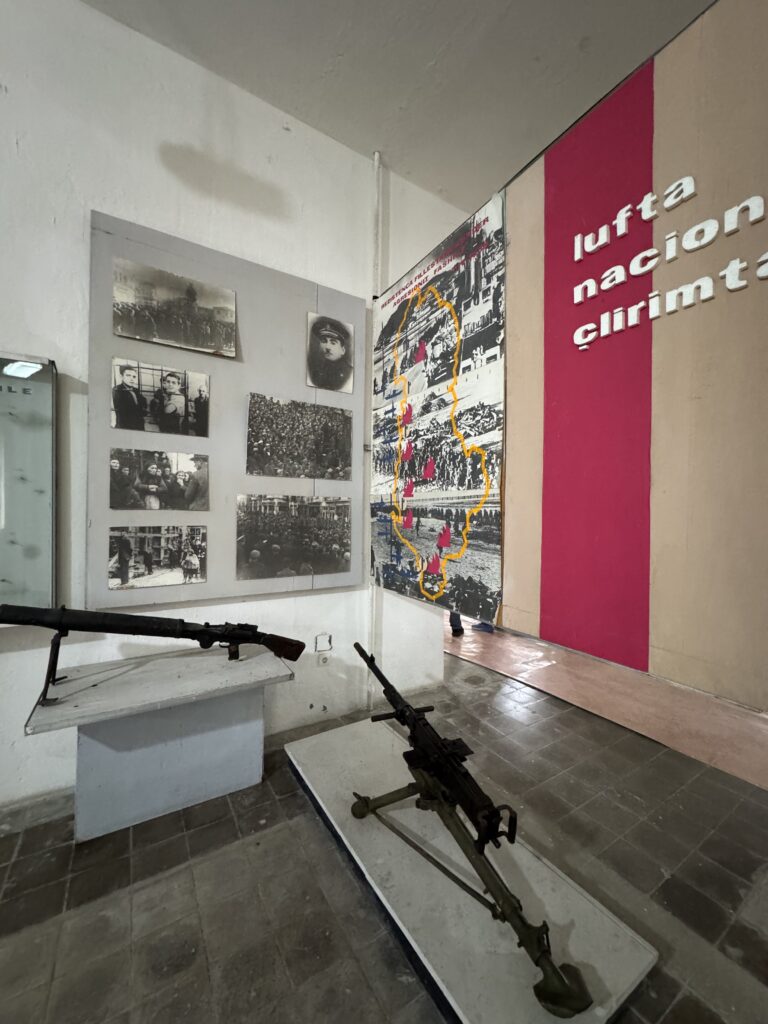
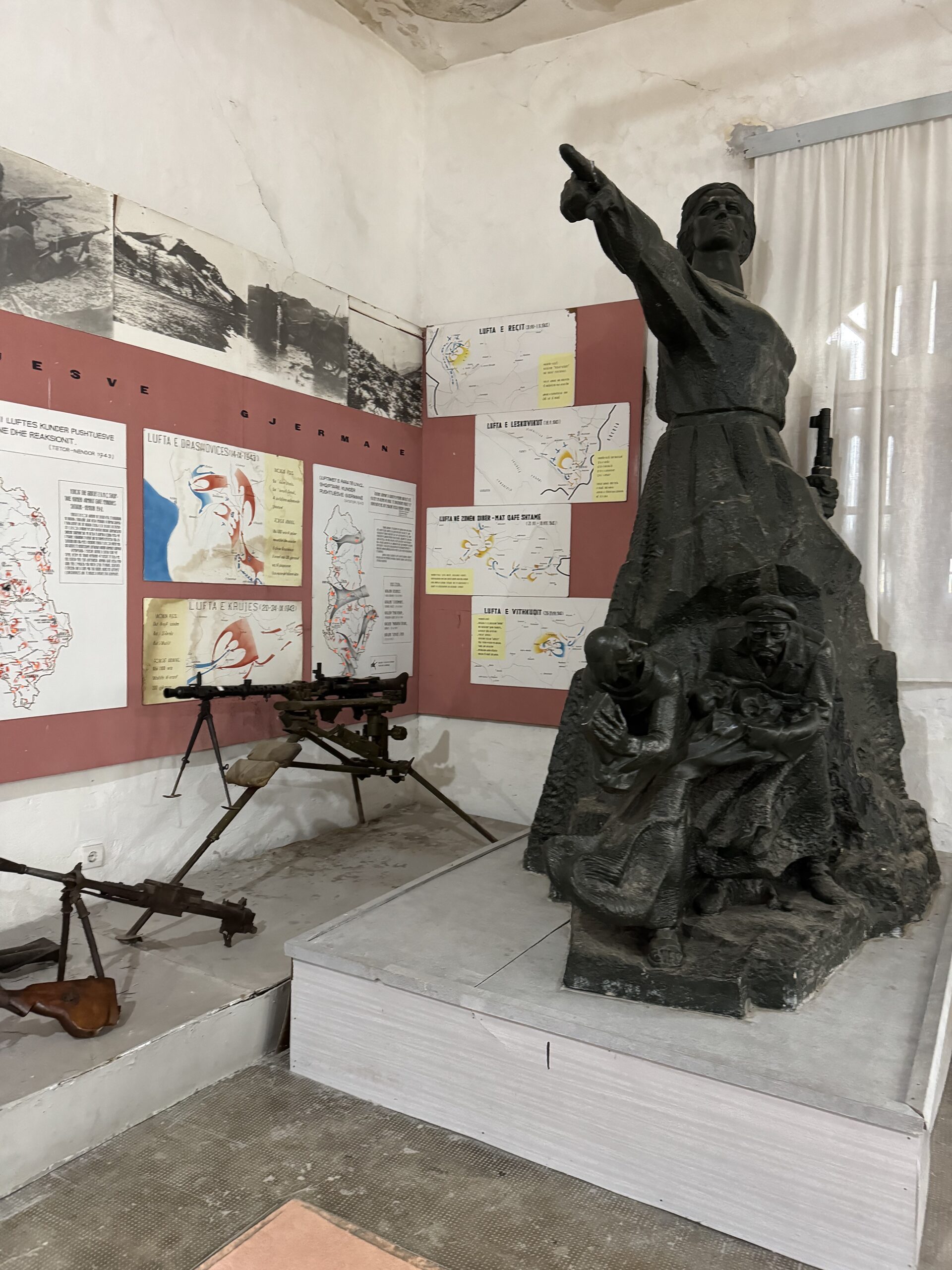
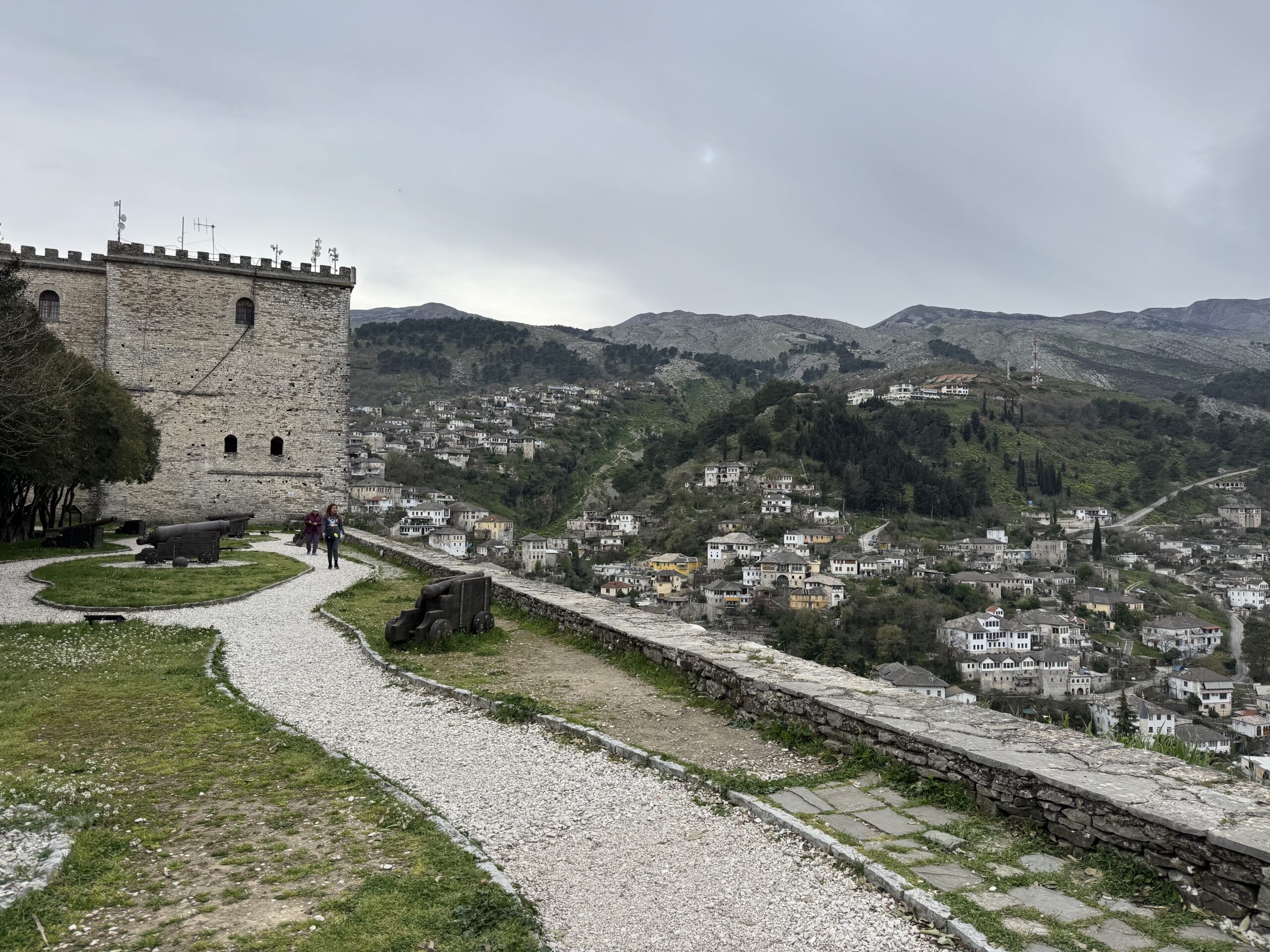
From there, we headed up to the castle! It was a much more extensive grounds and museum than I expected. There was a whole section where you could see the jail cells, and ancient art, and all kinds of weaponry from all different eras in Albanian history. Some of it might have taken more if I had known more about Albanian history to begin with, but it was still interesting to learn as much as I could as we went through the exhibits.
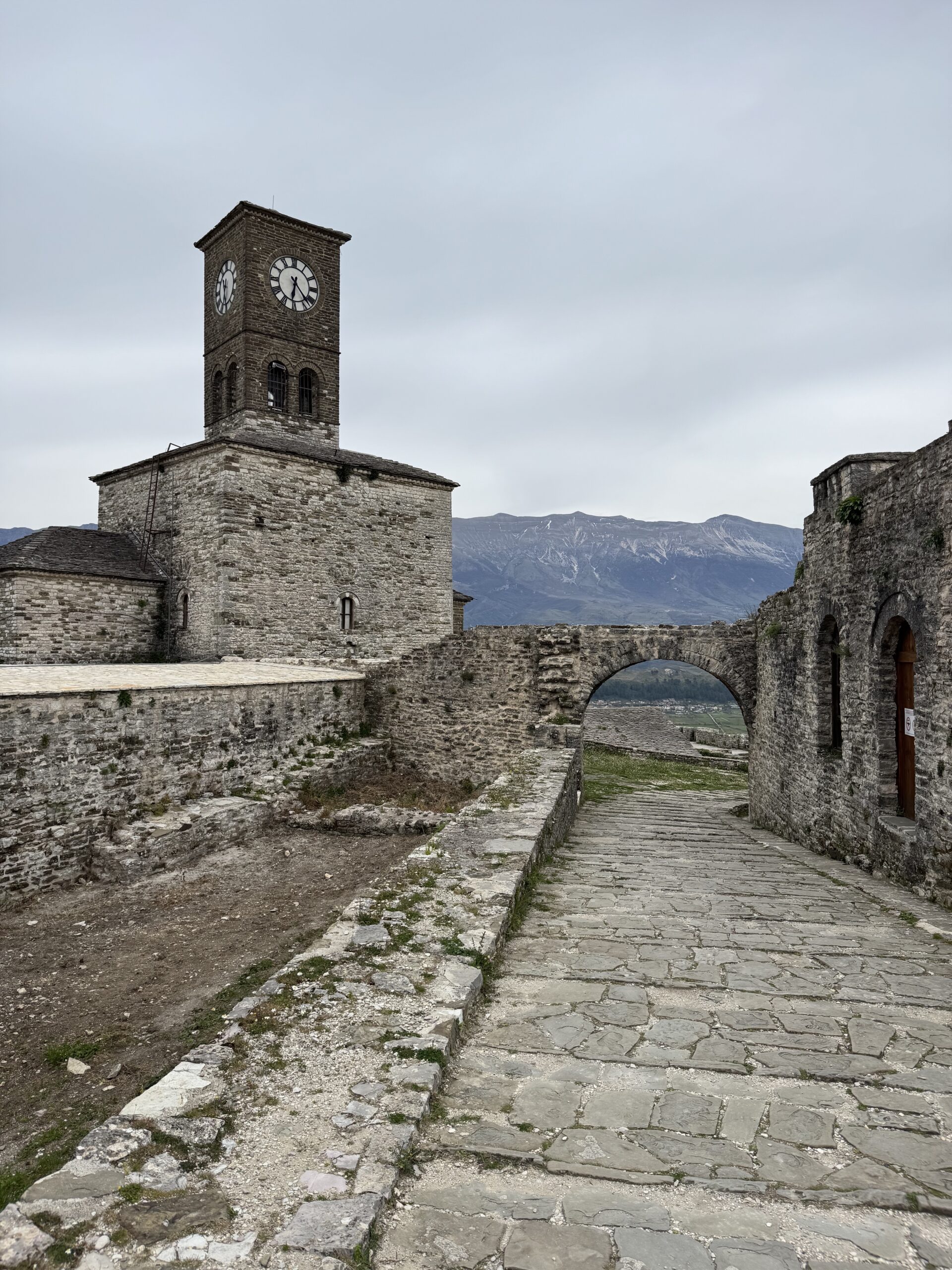
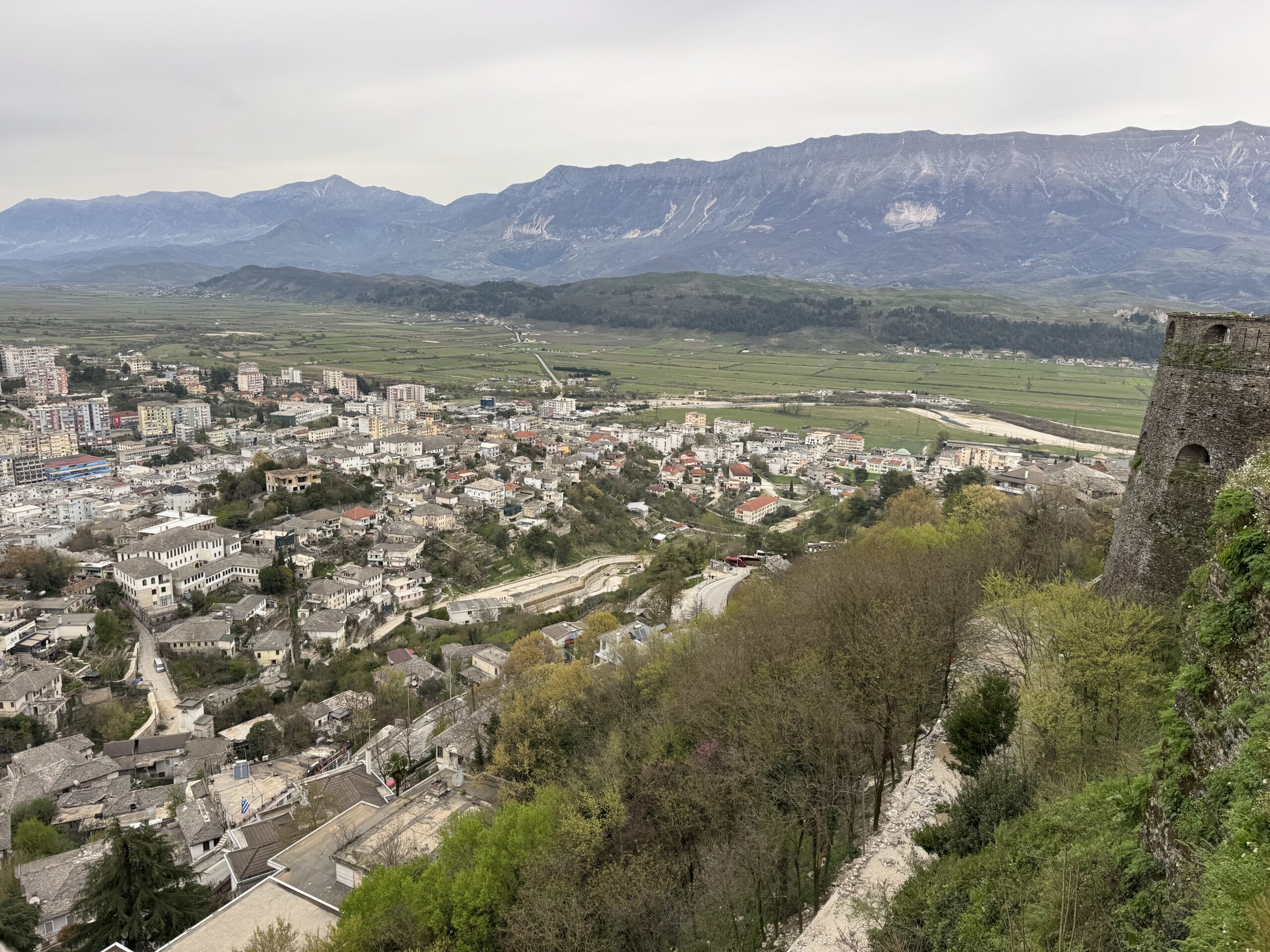
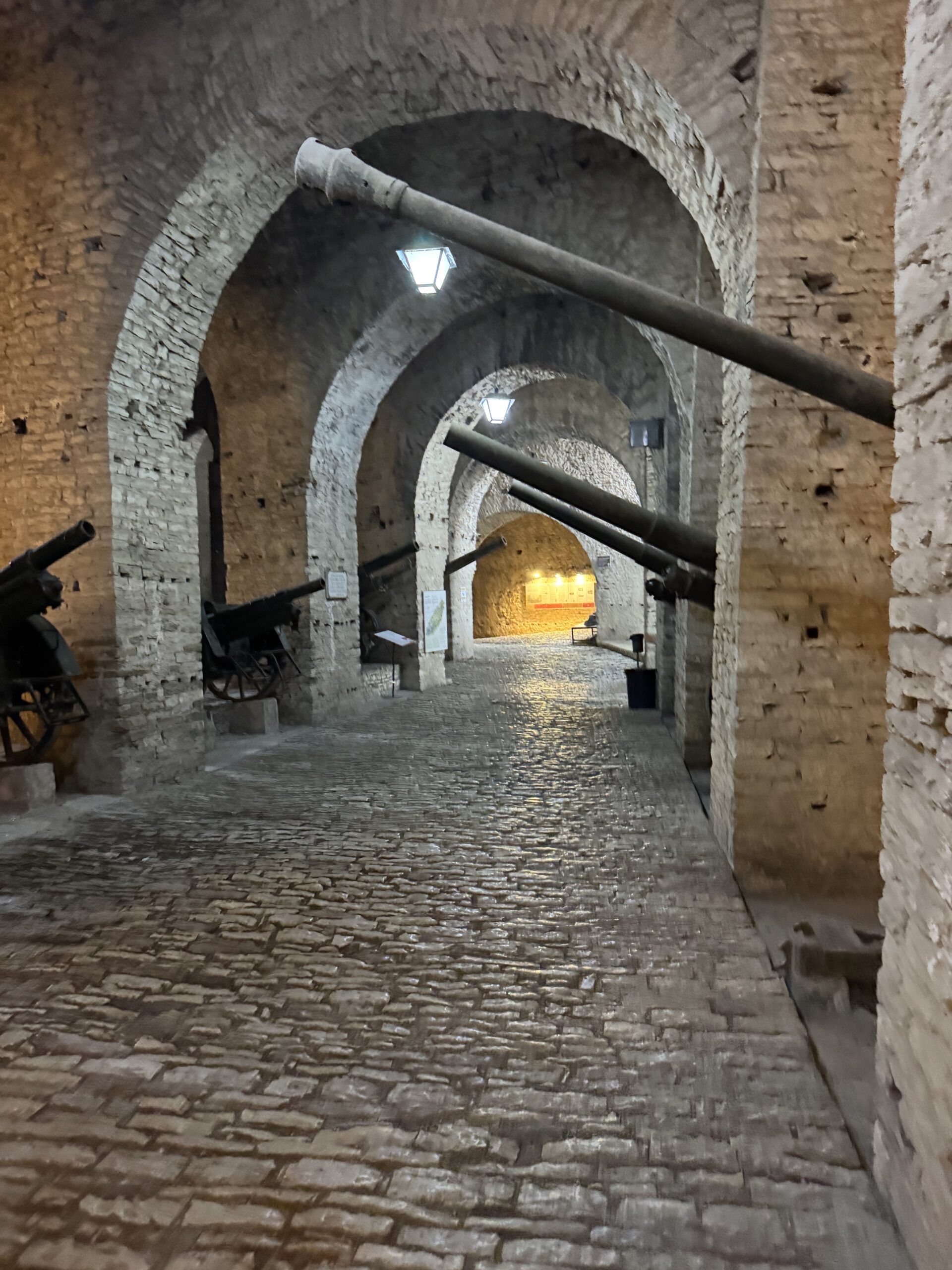
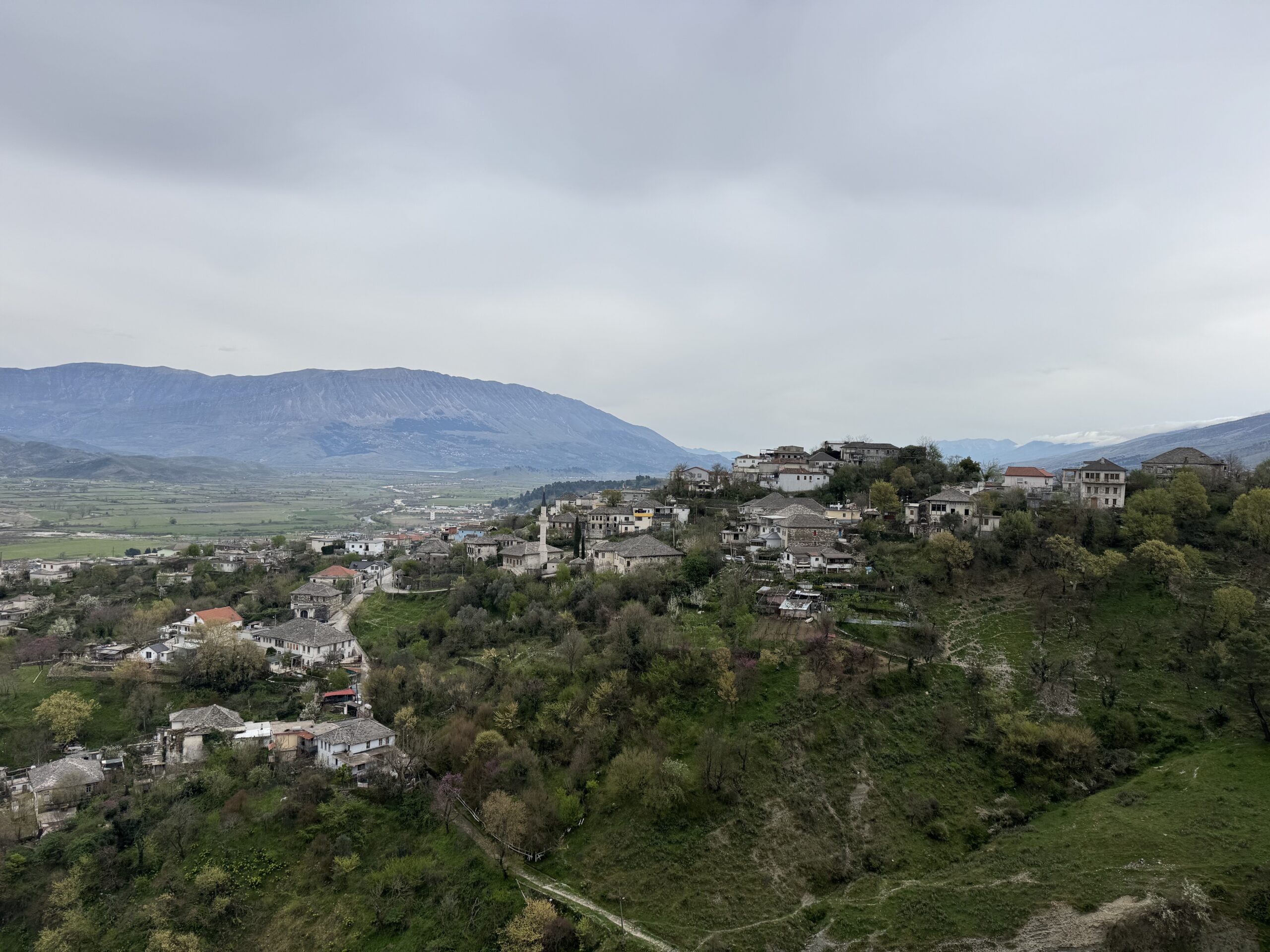
Also, there were great views from the top! After that, we headed to one more museum, which was more of a historical house that was maintained with how the wealthy would have lived in Albania before the communist era, in a more traditional way. That was super cool, although they limited what we could take photos of so I don’t have much from there. With our last bit of time in Gjirokastër, I got ice cream with a few of the other people on my tour and watched the sun set over the city.
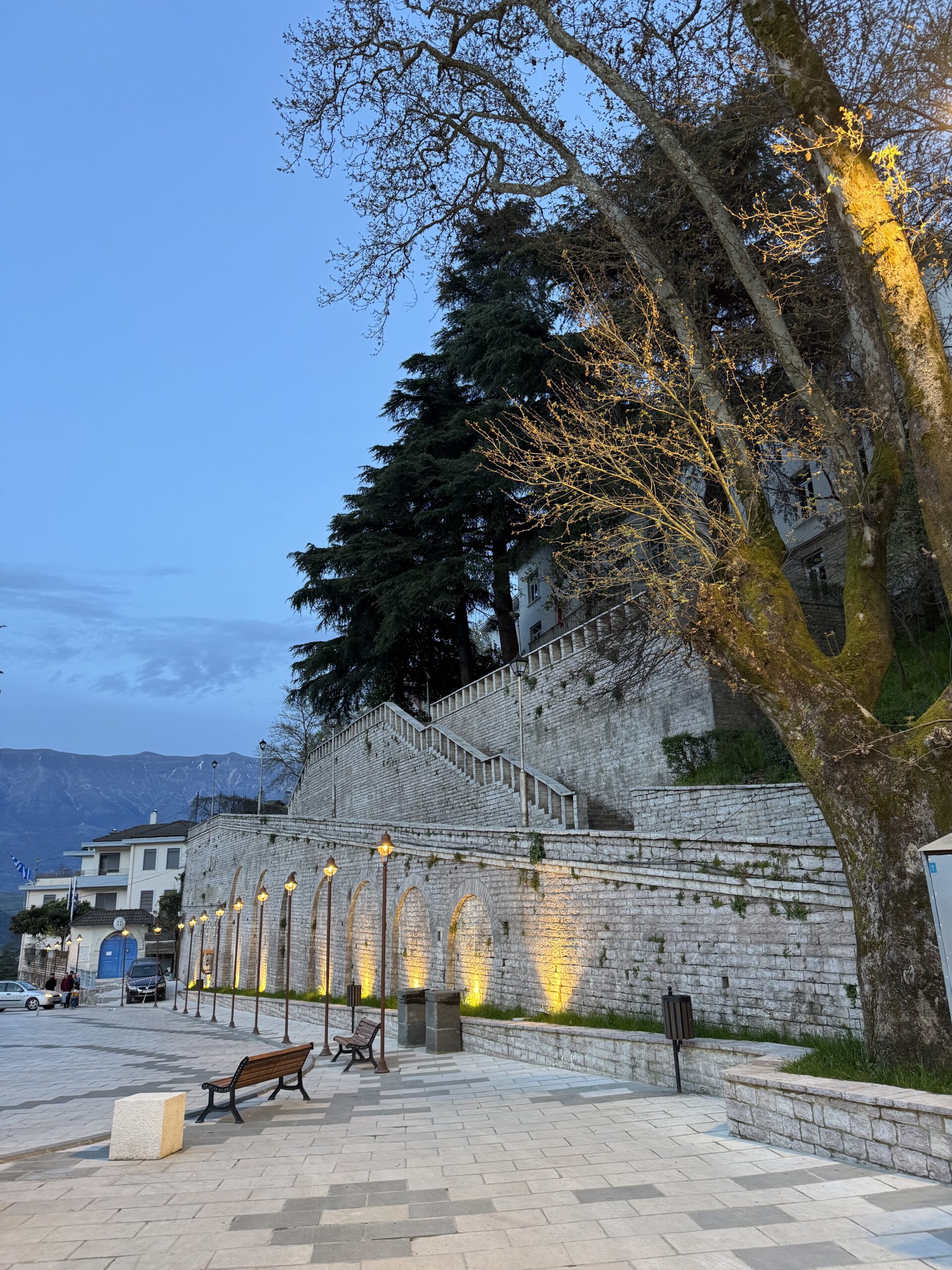
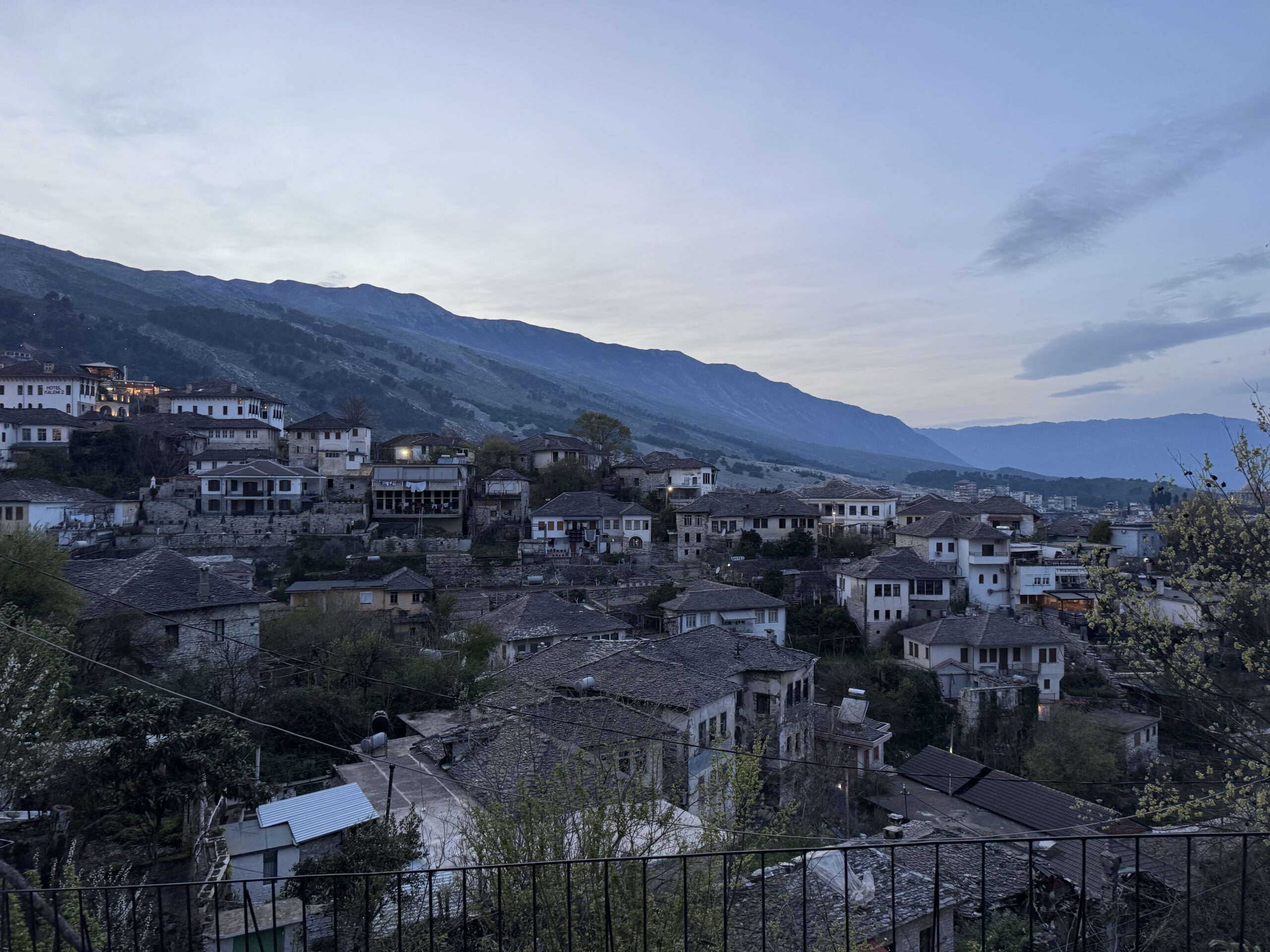
This particular day trip might not be for everyone, because it is a long day, and a lot of time in the car. Ideally, if your timeframe in Albania allows, it would be nicer to spend at least a night or two in Gjirokastër, because I’m sure there’s more to see in southern Albania. That said, I felt like between this, Berat, and my hiking trip, I got to see a lot of Albania in a fairly short amount of time! I thought all three day trips were excellent and would recommend this same set if someone was going for a similar number of days as I did.
I had a great time in Albania, but it was time to head back home! Overall, between Bosnia and Herzegovina, Yemen, and Albania, it was a really great set of countries that I got to explore on this particular trip.
